Recipients:

Central administration, regulator

Participants of the electricity market

Contractors and subcontractors

Investment environment

Industry organisations

Scientific and research institutions

Employees and potential employees

Media
We are a guarantor of security and stability of the power system in Poland – today and in the future. We feel responsible for the security of future generations.
Being aware of the condition of national infrastructure, challenges and trends that affect the development of the system, we undertake new build and upgrade projects in order to ensure its stability and security.
Our activities help to improve the operation of the PPS and to optimise energy costs for consumers.
We are an initiator and electricity undertaking implementing solutions that support the execution of national plans related to the power system.
Through our core business and additional activities, we generate positive impulses in the Polish economy. We have a significant contribution to the creation of added value, new jobs, income of the population and, owing to the taxes we pay, to the development of the region.
We make purchases from local Polish suppliers – we run the business locally and thus have a positive influence on the development of the Polish economy.
Thanks to the services provided, PSE supports the development of industry in Poland – we create infrastructure and provide facilities for business development.
We endeavour to ensure that our investments contribute to the development of regions and local communities.
Stable operation of the Polish Power System
Key figures
165 852 GWh
national gross electricity production in 2017, which represents an increase by 1.98 percent compared with 2016.
168 139 GWh
national electricity consumption in 2017, which represents an increase by 2.13 percent compared with 2016.
90 758.27 GWh
quantity of electricity supplied from the transmission network to domestic transmission service customers in 2017, including:
- 87 601.07 GWh energy supplied to DSOs,
- 3 157.20 GWh energy supplied to end users.
43 421 MW
installed capacity in the PPS in 2017
43 332 MW
maximum capacity in 2017 – which represents an increase of 4.9% and 5%, respectively, from 2016.
26 231 MW
maximum power demand in the PPS in 2017
99.99 percent
electricity supply continuity index in 2016-2017. The level of this index confirms the certainty of power supply to all our transmission service customers.
ENS - 671.64 MWh
AIT - 111.15 (minutes)
the low indicators in 2017 testify to a high level of dependability of the transmission system and certainty of power supply to consumers connected to our network
99.77 percent
availability index for transmission facilities (DYSU). It reached a high level at reference value of ≥ 97.5 percent; in 2016 it reached 99.74 percent.
1 460.4 m
capital expenditure incurred by w 2017.
147
number of infrastructure projects implemented in 2017.
10.48 bn
planned capital expenditure until 2021.
GRI 103-1 Management of the power system in Poland
Ensuring common access to electricity requires an efficiently operating system for its generation, transmission and distribution. All equipment connected to the system, including consumers’ facilities, forms the Polish Power System.
The power system is a special type of critical infrastructure, as it determines the security of society, economy and the state.
A power system operates in every country of the world. Almost everywhere – also in Poland – power systems are centrally controlled. Operation of the Polish Power System is controlled by theNational Power Dispatch Centre i.e. PSE dispatching service.
How does the power system work?
In terms of the character of its technical functions, the Polish Power System (PPS) consists of three subsystems:
Electricity generation
in power plants, CHP plants and distributed sources,
Electricity transmission
performed by the transmission system operator (TSO). Within the territory of Poland, PSE is the only TSO appointed by the President of the Energy Regulatory Office,
Distribution and consumption of electricity
Electricity generation
Electricity supplied to our homes is generated mainly in power plants and combined heat and power (CHP) plants. In Poland, the basic energy generating sources are thermal power plants in which energy is generated as a result of combustion – usually by burning hard coal or lignite. The largest cluster of those plants is situated in the southern part of the country. In larger cities, CHP plants operate which are mostly fired with coal, but also natural gas. Renewable energy sources (RES) are also developing: wind, hydro, biomass and photovoltaic.
Electricity transmission and distribution
Electricity transmission from power plants to consumers is possible over an extensive network of power lines and electrical substations. Depending on the distance over which electricity is transmitted, different voltage levels are used to optimise costs.
The following voltage standards are adopted in Poland for electricity transmission:
(extra-high voltages) – for long-distance transmission,
(high voltage) – for transmission over distances not exceeding several dozens of kilometres,
(medium voltage) – used in local distribution networks,
(low voltage) – used basically to supply power to end users.

Cross-border interconnections
The Polish Power System operates:
synchronously
with the ENTSO-E Continental Europe countries
(formerly UCTE),
with off-grid units
of the Dobrotvir power plant in the Ukrainian system,
non-synchronously
with the Swedish system
via the DC submarine cable,
non-synchronously
with the Lithuanian system
via the back-to-back DC link.
Synchronous interconnections
Western border (Poland-Germany)
- 400 kV Krajnik-Vierraden double-circuit line – line under upgrading,
- 400 kV Mikułowa-Hagenwerder double-circuit line with a phase shifter in Mikułowa.
Southern border (Poland-Czech Republic)
- 400 kV Wielopole/Dobrzeń-Nosovice/Albrechtice double-circuit line,
- 220 kV Kopanina/Bujaków-Liskovec double-circuit line.
Southern border (Poland-Slovakia)
- 400 kV Krosno Iskrzynia-Lemesny double-circuit line.
Asynchronous interconnections
Northern border (Poland-Sweden)
- 450 kV DC Słupsk Wierzbięcino-Storno cable line with a capacity of 600 MW.
Eastern border (Poland-Lithuania)
- 400 kV double-circuit line interconnected with the Lithuanian system via the back-to-back DC link with a capacity of 500 MW.
Other interconnections
Eastern border (Poland-Ukraine)
- 220 kV Zamość-Dobrotvir single-circuit line operating in coordination with off-grid generation units on the Ukrainian side (the interconnection allows only electricity import to Poland).
- The 750 kV Rzeszów-Chmielnicka single-circuit line is temporarily shut down. Re-commissioning of the line is being considered after the future character of its operation is agreed with the Ukrainian side.
Cross-border interconnections
Western border (Poland-Germany)
400 kV Krajnik-Vierraden double-circuit line – line under upgrading,
400 kV Mikułowa-Hagenwerder double-circuit line with a phase shifter in Mikułowa.
Southern border (Poland-Czech Republic)
400 kV Wielopole/Dobrzeń-Nosovice/Albrechtice double-circuit line,
220 kV Kopanina/Bujaków-Liskovec double-circuit line.
Southern border (Poland-Slovakia)
400 kV Krosno Iskrzynia-Lemesny double-circuit line.
Eastern border (Poland-Ukraine)
220 kV Zamość-Dobrotvir single-circuit line operating in coordination with off-grid generation units on the Ukrainian side (the interconnection allows only electricity import to Poland).
The 750 kV Rzeszów-Chmielnicka single-circuit line is temporarily shut down. Re-commissioning of the line is being considered after the future character of its operation is agreed with the Ukrainian side.
Eastern border (Poland-Lithuania)
400 kV double-circuit line interconnected with the Lithuanian system via the back-to-back DC link with a capacity of 500 MW.
Northern border (Poland-Sweden)
450 kV DC Słupsk Wierzbięcino-Storno cable line with a capacity of 600 MW.

Fig. 1. Cross-border interconnections
GRI 103-2 Transmission system management in the PPS
Transmission network operation management takes into account the needs of electricity consumers throughout the country.
Network operation management is the responsibility of:
- transmission system operator (TSO) – responsible for operation management of the transmission network and exercises decision-making rights relating to network operation in a coordinated 110 kV network, and relating to security of electricity supply;
- distribution system operator (DSO) – responsible for network operation management in the distribution network, for which it is the operator, taking into account the TSO's decision-making rights.
The parties participating in network operation management in a meshed network include also generators, consumers, transmission and distribution undertakings other than system operators, whose devices, facilities or networks are directly connected to a meshed network.
Meshed network includes a TSO-managed transmission network and an DSO-managed coordinated 110 kV network, with the TSO's decision-making rights.
Day-to-day power network security is ensured by hierarchically organised TSO and DSO dispatch services as well as generators' and consumers' O&M services.
Polish Power System is organised into the following hierarchy of dispatch services:
National Dispatch Centre (Krajowa Dyspozycja Mocy – KDM
manages the operation of the 750, 400, 220 kV transmission network as well as selected 110 kV lines of system-wide significance,
Area Dispatch Centre (Obszarowa Dyspozycja Mocy – ODM)
manages the operation of the 750, 400, 220 and 110 kV transmission network and switching operations,
Central Dispatch Centres, Branch Dispatch Centres (CDM, OCD)
manage the operation of the 110 kV distribution network and switching operations in the 110 kV and lower-voltage distribution network.
The TSO dispatch services cooperate directly with the DSO dispatch services (Central Power Dispatch Centres, Branch Dispatch Centres), and O&M personnel of enterprises dealing with electricity generation (Duty Power Plant Operation Engineer – Dyżurny Inżynier Ruchu Elektrowni – DIRE). The cooperation is based on the Transmission Network Code .
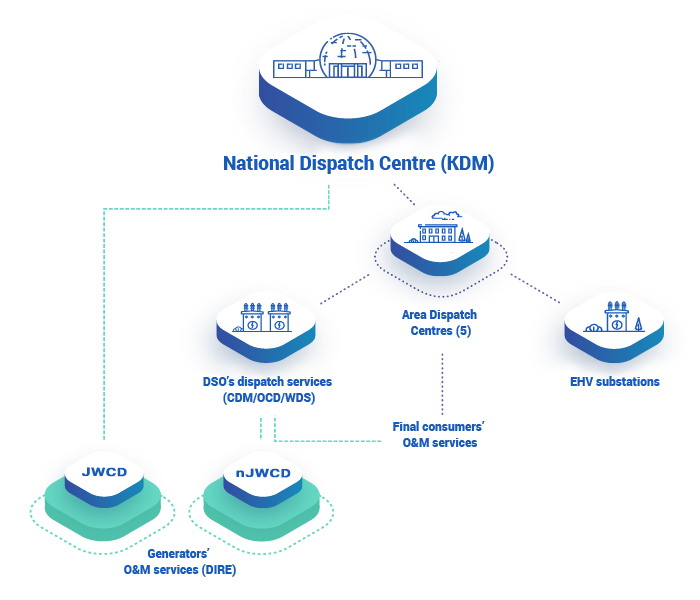
The TSO's dispatching services
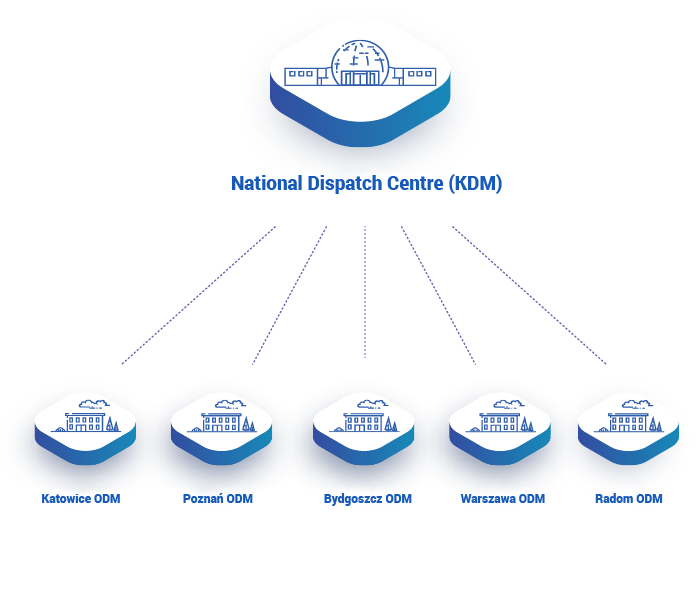
Fig. 2. Organisation of dispatching services in Poland
The TSO's cooperation with transmission system operators of neighbouring countries in network operation management is based on the rules described in ENTSO-E/UCTE Operation Handbook and conditions laid down in bilateral agreements.
Balancing power demand in the power system
GRI 103-2 Economic development of the country is associated with an increase of electricity demand. This makes it necessary to have appropriate generating and transmission capacity to ensure the security of supply.
In order to ensure generating capacity necessary to meet demand, we perform, as transmission system operator, the coordination planning process for different time horizons. The process covers annual, monthly and daily coordination plans.
We prepare coordination in the form of:
annual plans (PKR)
for a period of up to 3 years
monthly plans (PKM)
Daily planning, which comprises:
- Preliminary daily plans (WPKD)
- Daily plans (PKD)
- Current daily plans (BPKD)
- Daily technical-trading balances (BTHD)
The schedule of planning activities and the scope of forecasted and published data are set forth in the Transmission Network Code .
The plans should ensure the maintenance of surplus power levels required in a given period, available in excess of forecasted demand, by coordinating plans of generation unit repairs and outages of meshed network elements, taking into account plant and network constraints and planned cross-border exchange constraints.
In order to ensure the continuity of electricity supply and balance the system even in unfavourable conditions, in periods of peak electricity demand we use:
available capacity
of generation units
which are not centrally dispatched,
additional capacity
in power plants operating in overload,
i.e. at a capacity higher than nominal (providing ancillary services),
intervention power supply from pumped storage plants
which allow power demand to be balanced (as part of ancillary services) within a short period (2-4 hours),
dispatch electricity exchange
with the neighbouring transmission system operators,
cold intervention reserve,
interruptible load services on TSO’s instruction - DSR.
Activities fostering dependable operation of the transmission system
In order to ensure the secure and cost-effective operation of the system, our organisation purchases ancillary services.
Ancillary services are necessary for the correct operation of the power system, operational dependability of the system and maintenance of electricity quality parameters.
Ancillary services:
Regulation ancillary services (RUS) of Active Scheduled Generating Units (JGWa):
- operational cold reserve,
- share in primary control,
- share in secondary control,
- underload or overload operation,
- participation in automatic voltage and reactive power control,
Active Scheduled Generating Units (JGWa) activation service,
RMR and JGWa activation services are provided by units remaining at TSOs’ disposal. TSOs conclude RMR service agreements and JGWa activation service agreements with all generators that have Centrally Dispatched Generating Units. In 2017, PSE had 10 agreements concluded for the provision of RMR services and 10 agreements for the provision of the activation service.
Regulation ancillary services involving the intervention reserve:
- contingency operation,
- intervention Cold Reserve,
- interruptible load service.
Regulation ancillary services involving the intervention reserve are activated on instructions from the TSO and are used to intervene to maintain the power balance throughout the PPS or in its selected areas (having regard to the network operation conditions) in order to ensure operational security of the PPS. In 2017, PSE had the following contracts: 2 contracts for the provision of contingency operation service, 2 contracts for the provision of the intervention cold reserve service, and 25 contracts for the provision of the interruptible load service.
nJWCD reliability-must-run service (RMR service)
The service is intended to ensure the minimum volumes, necessary in terms of the PPS operation security, of active power and reactive power generation at the different “grid points” (nodes or node cluster areas). In 2017, PSE had reliability-must-run contracts concluded with 9 generators.
Polish Power System (PPS) recovery service
It consists in ensuring readiness to start-up a power plant without external power supply and continuous operation in islanding mode and readiness to execute the TSO’s instructions to start-up additional power plants and to expand the island. The service is purchased by the TSO in the event of a large system-wide failure resulting in a blackout throughout the PPS or in its substantial part. In 2017, PSE had contracts for the PPS restoration service concluded with 4 generators.

DSR Intervention Programmes
At the same time, PSE implemented IT tools supporting the provision of meter data, billing of services and management of the DSR service with regard to activation of services and communication with participants. Based on comments submitted by providers of DSR services and experience gained from mandatory IP-DSR tests performed, changes were introduced, whereby the rules for the provision of the DSR service were refined and presented in a more transparent manner and identified constraints hindering the development of the DSR service market were eliminated.
At the end of 2017, another auction was announced under the developed and refined conditions for the provision of the DSR services.
Security and continuity of supply
System operation dependability indicators
Indicators that characterise the continuity of supply and duration of outages (ENS and AIT) have been calculated for a group of supply sites comprising final consumers and power distribution system operators who have one transmission network supply site. Shutting down the supply site practically results in interruption of electricity supply from the transmission network to consumers fed from that network.
ENS GRI EU28, AIT indicators GRI EU29 for emergency outages
Fig. 3. ENS and AIT indicators for emergency outages
*The values of the ENS and AIT indicators presented in the table have been calculated for unscheduled (emergency) outages and do not include scheduled outages.
In 2017, one emergency outage occurred, which resulted in a 3-hour interruption of power supply to one of consumers fed from the transmission network. The outage was caused by an emergency manual disconnection of feeder lines. The reason for the power cut was an unauthorised person having climbed a 220 kV power line pylon. The shutting down of other equipment, lines and transformers connected with the incident site was dictated by safety concerns.
In 2016, no incidents were reported, leading to interruptions of power supply to consumers at transmission network supply points, referred to above.
Low levels of the ENS and AIT indicators testify to a high level of operational dependability of the transmission system and the certainty of supply to consumers connected to the network.
ENS GRI EU28, AIT indicators GRI EU29 for planned and emergency outages
Fig. 4. ENS and AIT indicators for all outages (scheduled and emergency)
*The ENS and AIT values presented in the table have been calculated for emergency and scheduled outages resulting from necessary scheduled repair and maintenance work on transmission network elements feeding consumers.
The ENS and AIT values remaining at a steady low level (similar values for 2017 and 2016) has a positive effect on the confidence of consumers connected to the transmission network. We reduce the number and duration of interruptions in electricity supply to consumers due to scheduled outages by implementing systems optimising the schedule of repair and maintenance work on transmission network elements feeding consumers. In the case of scheduled outages, shutdowns are performed at times agreed with consumers, usually in periods of no power consumption declared by consumers. Thanks to this, during outage periods, consumers adjust their demand or use other methods electricity supply (e.g. from the DSO’s network).

ENS
an indicator of electrical Energy Not Supplied by the power transmission system. Expressed in MWh per year, it represents a sum of products of power not supplied due to interruption and its duration. It includes short, long and very long interruptions, including or excluding catastrophic interruptions.
AIT
an indicator of Average Interruption Time in the power transmission system. Expressed in minutes per year, it is a product of 60 and energy not supplied (ENS) by the power system, divided by the average power supplied by the transmission system, expressed in MW.
Electricity supply continuity index
The supply continuity index represents the certainty of power supply to all consumers connected to the transmission network
Fig. 5. Electricity supply continuity index (WCD)
The quantity of electrical energy not supplied to transmission service customers in a year has been calculated taking into account both scheduled and unscheduled cuts in electricity supply to consumers. The use of the indicator of total quantity of electrical energy supplied from the transmission network during a year represents the volume of electricity taken from the transmission network at all supply sites by final consumers and DSOs connected to the transmission network.

Electricity supply continuity index (WCD)
supply continuity index representing the certainty of power supply to all consumers connected to the transmission network. It is calculated as the total quantity of electrical energy delivered to transmission service customers (DSOs and final consumers) divided by the sum of the quantity of electrical energy supplied and not supplied to those consumers during a year.
Maintaining supply continuity indexes at a high level results from the transmission assets maintenance and repair policy adopted by the TSO.
What we do to maintain continuity of electricity supply to consumers:
- Development of long- and short-term network operation coordination plans.
Time schedules of both maintenance work and repair work on network elements and generating units so as to ensure the maintenance of surplus power levels required in a given period, available in excess of forecasted demand, and to ensure compliance with the required secure network operation criteria, including the reliability criterion (n-1).
- Development and implementation of a single maintenance model that allows the state of repair of equipment and its operational environment to be evaluated in a cyclic, standardised and measurable manner. Owing to those activities, the most depreciated and oldest grid assets – the potential source of emergency and fault conditions – are preventively replaced.
- Implementation of the maintenance personnel development programme. It supports continuous competence building of the company's own maintenance personnel, including field personnel.
- Undertaking investment activities.Optimises the loading of transmission lines and eliminates overloads of transmission system elements.
- Systematic standardisation of network equipment and creation of storage facilities. Supports quick and cost-effective necessary replacements.
| GRI EU12 Electrical energy losses in the transmission process, showing loss causes | Unit | 2017 | 2016 |
|---|---|---|---|
| Technical losses | MWh | 1,669,042 | 1,684,995 |
| Non-technical losses (e.g. illegal consumption of electricity) | MWh | 0 | 0 |
| Transmission losses as percentage of total energy fed into the system (G.10.7 official data)* | % | 1.60 | 1.62 |
*The value does not include energy consumed by substation auxiliaries
Table 1. Electrical energy losses in the transmission process, showing loss causes
Technical transmission losses are related, among other things, to network operational configuration, electricity demand and the quantity of electricity transmitted in cross-border exchange.

Development of the transmission system
GRI 103-1 The provision of the necessary quantity of electricity to all consumers is key to ensuring sustainable development of the national economy. We seek to ensure that the transmission system provides dependable electricity supply both today and in the future. It is our responsibility.
The key and foremost task of Polskie Sieci Elektroenergetyczne as transmission system operator is to ensure security of electricity supply – both currently and in the long term. PSE must also create conditions for connection to the transmission network and power evacuation from new power plants and RES, as well as develop cross-border interconnections. To perform those tasks effectively, an efficient and well-developed network infrastructure is necessary – power lines and electrical substations. For this reason, the investment area related to transmission infrastructure is of great significance.
Implementing Poland’s Energy Policy, PSE focuses its investment activity mainly on the development of 400 kV lines, which have greater transmission capabilities with lower energy losses. The existing 220 kV network is gradually being replaced with a 400 kV network, and a multi-annual programme is in progress for the replacement of transformers with lower loss models.

Facts worth knowing
GRI 103-2 The key projects implemented in the coming years include the expansion of the national transmission system in terms of evacuation of power and connection of new generating sources in northern Poland (conventional and RES sources), southern and south-western Poland (also conventional and RES sources), expansion of the so-called central node – lines and substations in the centre of the country.
Our company has been preparing to embark on this ambitious investment process for several years. We have prepared and implemented a new, effective investment model.
Improving the new infrastructure investment implementation model
GRI 103-2 As a guarantor of security and stability of the national power system in Poland, PSE feels responsible for the condition of the Polish transmission infrastructure. We implement network investment projects, being aware of the challenges and trends affecting the current and future needs of the system.
Selected trends driving a change of the needs of the power system:
- The increasing share of unstable sources in the Polish energy mix complicates the transmission network management process;
- The Polish power system stands at the threshold of a potential revolution in the automotive industry, which may lead to a significant increase in energy demand;
- Historical centres of electricity supply and demand are shifting due to the support being given to distributed sources.
All the above factors hinder the long-term development planning of the transmission network.
In response to market needs, we are improving the investment area. In creating the Investment Projects Plan and the Network Investment Portfolio, we use advanced technological tools.
By improving PSE’s investment area, we managed to reduce delays of investment projects in 2017, and to set a realistic timeline for putting individual projects into service. In addition, the improved effectiveness of the investment area contributed to a higher security of energy supply and rationalisation of expenditure, thus reducing the financial burden on consumers.
GRI 103-2 Network Investment Portfolio
According to the new Project Implementation Model implemented at PSE, we have deployed a tool for the management of the network project implementation process – Network Investment Portfolio.
The projects included in the Portfolio are grouped, categorised, prioritised and sequenced for implementation taking into account specific system conditions related to the possibility of required outages of transmission network elements. The portfolio is subject to quarterly updates, and in each case it requires the acceptance of the Investment Committee.
The Network Investment Portfolio consists of transmission network construction, expansion and upgrade projects for which:
- agreements have been signed with contractors,
- a public contract notice has been published,
- a contract award decision has been made.
Owing to functional interrelations and a common objective of certain investment projects, the projects included in the Network Investment Portfolio have been grouped into investment programmes so as to allow each programme to be assigned a separate meaning reflecting its role in the system and the expected outcome. Projects have been grouped into programmes taking into account the results of system analyses performed at the stage of scoring analysis of investment projects and tasks included in the Investment Projects Plan of PSE S.A. 2017-2021. This way, 5 strategic programmes and 3 area programmes have been created.
Strategic programmes for 2017-2021
On 1 May 2017, the Central Investment Unit (CJI) was set up for the implementation of the investment process: construction, expansion and upgrade of grid assets.
Project-based organisation was implemented at CJI; programmes were set up and individual projects were established. Each programme and project implemented at CJI is monitored, which makes it possible to:
- deliver management information to higher management levels,
- coordinate activities,
- give feedback to project managers on their projects and related projects,
- quickly respond to changes in projects or in their environment.
Programme 1.
Power evacuation from Kozienice Power Plant including the improvement of power supply conditions in north-eastern Poland:
17 projects, PLN 1.99 bn of total contracted budget as at 31 August 2018.
Programme 2.
Power evacuation from Turów Power Plant including the improvement of power supply conditions in south-eastern Poland:
14 projects, PLN 1.82 bn of total contracted budget as at 31 August 2018.
Programme 3.
Power evacuation from Dolna Odra Power Plant and RES including the improvement of power supply conditions in north-western Poland: 12 projects, PLN 1.53 bn of total contracted budget as at 31 August 2018.
Programme 4.
Power evacuation from RES including the improvement of power supply conditions in northern Poland:
14 projects, PLN 2.23 bn of total contracted budget as at 31 August 2018.
Programme 5.
Power evacuation from Bełchatów Power Plant including the improvement of power supply conditions in central Poland:
6 projects, PLN 0.23 bn of total contracted budget as at 31 August 2018.
Area Programmes for 2017-2021
Programme 6.
Area Programme North:
25 projects, PLN 1 bn of total contracted budget as at 31 August 2018.
Programme 7.
Area Programme South:
35 projects, PLN 1.27 bn of total contracted budget as at 31 August 2018.
Programme 8.
Formal completion of investment projects:
23 projects, PLN 0.41 bn of total contracted budget as at 31 October 2018.
Key figures


Implementation of the Tangible Investment Plan
GRI 203-1 We have adopted strategic and area programmes and select a package of investment projects for them to ensure the effective performance of strategic objectives based on sustainable development of the national transmission system. In doing so, we take into account the current conditions – especially system and formal/legal conditions of project implementation.
Formalities and legal issues related to line construction projects take 80 percent of the contract time, whereas the line construction phase itself accounts for no more than 20 percent.
Capital expenditure by Plan group (amounts)
|
Description |
Capex (PLN bn) | |
|---|---|---|
|
2017 |
2016 | |
|
ICT |
33.9 |
37.3 |
|
Construction and expansion of power lines and substations |
1,250.8 |
1,024,3 |
|
Upgrade of substations and power lines |
150.2 |
136.5 |
|
Buildings and structures |
1.4 |
1.8 |
|
Purchase of finished capital goods |
7.3 |
4.4 |
|
Preparation of investment projects |
9.7 |
8.9 |
|
Purchase of network facilities |
0.6 |
3.7 |
|
Provision |
6.5 |
- |
|
Total |
1,460,4 |
1,216.9 |
Table 2. Capital expenditure by Plan group (amounts)
Investment projects under implementation
|
Description |
Number of tasks | |
|---|---|---|
|
2017 |
2016 | |
|
Continued tasks |
114 |
107 |
|
Newly started tasks |
33 |
20 |
|
Total |
147 |
127 |
Table 3. Investment projects under implementation
Key figures
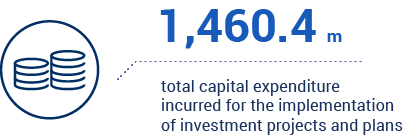
Maintaining the transmission network
We are the owner of a transmission network consisting of over 14,195 km of extra-high voltage lines and 106 electrical substations. The availability of our network largely determines the operational security of the whole system. Therefore, we maintain the transmission network in a state of repair and operational setup meeting the applicable requirements.
Our network infrastructure also includes a 450 kV submarine cable line of 127 km in length. The length of the entire line connecting Poland with Sweden is 254 km.
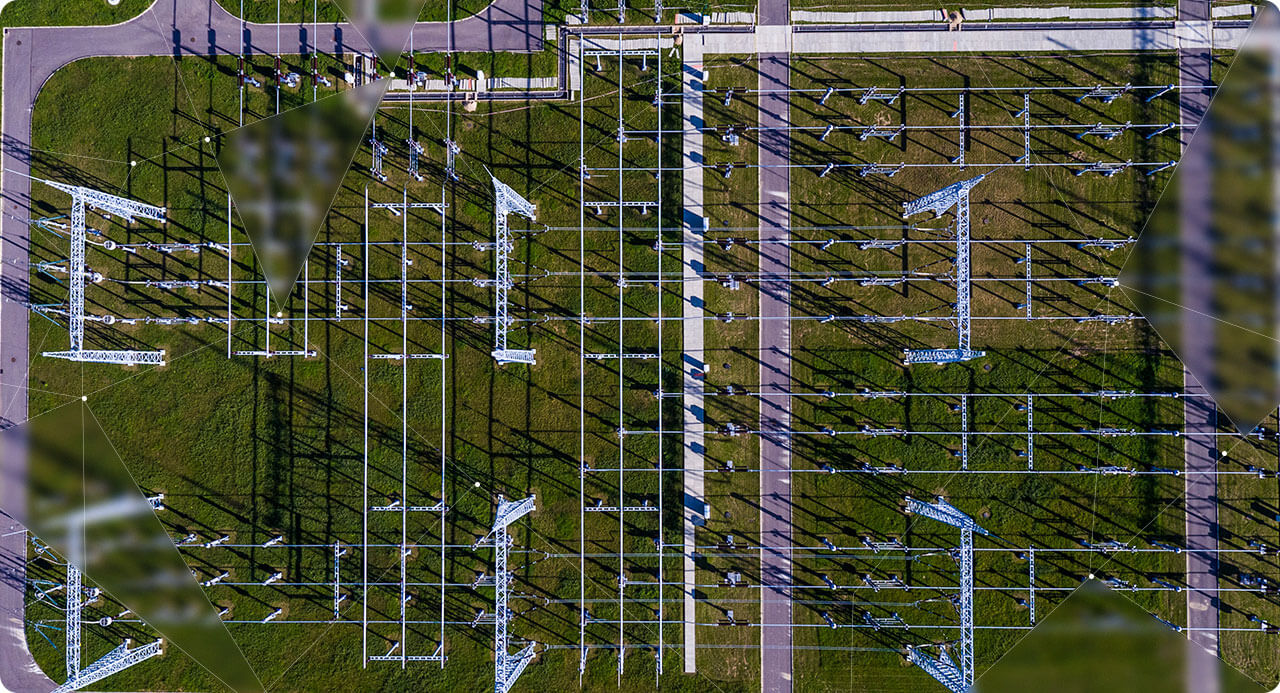
Management of the network maintenance process
GRI 103-2 The network infrastructure maintenance process is based on the grid asset maintenance model. The model, together with the “Instructions for the Organisation and Execution of Maintenance Work on Lines and Substations” is a set of overriding principles that govern the process of grid asset maintenance in the area of organisation, planning, execution, documentation and billing of maintenance work.
The model defines the scopes of work and the rules for the performance of work with reference to laws and regulations as well as statutory obligations imposed on the transmission system operator. Hence it creates conditions for the systematic execution of the optimisation process with regard to the maintenance of grid assets. Arising directly from the maintenance model are detailed rules for equipment maintenance put together in the Instruction on the Organisation and Execution of Maintenance Work on EHV Lines and Substations, as well as the guidelines on the assessment of the state of repair and the repair qualification rules.
We have updated the asset maintenance model based on our previous experience. We have opted out of the Time-Based Maintenance (TBM) process which is based on fixed work cycles resulting directly from O&M manuals of individual equipment units. The new asset maintenance model has been developed on the basis of the PdM (Predictive Maintenance) methodology, , i.e. maintenance technique based on the prediction of needs. it combines regular measurements of the state of repair taking into account expected quality outcomes of work (diagnostics results). The main focus is placed on diagnostic work providing a basis for a measurable result of the state of repair of individual pieces of network equipment.
The outcomes of the work concerned, combined with the experience gained through many years of maintenance of equipment make it possible to assess its state of repair and forecast the rate of deterioration, and consequently to identify the impact of maintenance (inspections, maintenance procedures) on the condition of individual facilities in the future. At the same time, the maintenance model makes it possible to forecast the cost of maintenance of individual equipment units throughout their service life.
GRI 103-1 In the network maintenance process, we use the Asset Management IT process. It covers the entire maintenance process, i.e. a complex database of assets, registration of events, work planning and execution, contract management and warehouse management. Owing to this, all the above-mentioned are performed at a very high level of detail necessary to ensure the expected support to the decision-making process in the grid assets maintenance area.
Owing to the fact that PSE’s assets are dispersed across the country, a geographic information system (GIS) is necessary for its proper management. The Spatial Information System (System Informacji Przestrzennej – SIP) used for the purpose, based on the ArcGIS platform, allows e.g. the impact of the external environment on the transmission network operation to be analysed. It provides key support in identifying the dependability of linear right-of-way facilities and allows precise targeting of inputs and expenditure on PSE’s network infrastructure maintenance in the expected state of repair.
Maintenance of grid assets also requires the support of IT systems, but the core effort of the whole process is based on field teams of our company, based at five field units of the Maintenance Department: in Warsaw, Radom, Katowice, Poznań and Bydgoszcz. Owing to a significant geographical distribution of assets, field units are additionally subdivided into 28 ZES Field Maintenance Divisions. Through their work, ZES employees ensure the security of operating as well as diagnostic and maintenance activities. Through their involvement in protecting and identifying network failure locations, they also serve as a power emergency service for the purposes of the transmission network operator. The competence and specialised skills of the employees of Field Maintenance Divisions are maintained at a high level owing to systematic technological training. On the other hand, owing to the maintenance personnel development programme launched, the training provided to ZES employees is comprehensive and systematic.
Training based on the Polish Power System simulator deployed at PSE is a unique feature in the Polish market. The training improves operating skills – especially through the simulation of emergency states in the transmission and TSO-coordinated networks
Maintenance, both diagnostic and preventive, is carried out under the annual Technical Services Plan (Plan Usług Technicznych – PUT). The Plan provides mainly for diagnostic procedures necessary to maintain the expected level of knowledge on the state of repair of equipment, but it also covers above-standard work resulting from analyses of the condition of equipment based on the rules specified in the maintenance model. As the power network is a “living” and changing structure, the PUT is modified during the year due to the need to perform unscheduled and emergency work. Maintenance work is carried out first by the company’s own maintenance crews (ZES). In cases which exceeding PSE’s personnel capacity or require the involvement of a unique (e.g. manufacturer’s) maintenance service, maintenance work is performed by third-party contractors.
Where further maintenance of an asset is financially unviable or may lead to an increased probability of network failure, replacement work is carried out on such asset. Depending on the complexity, technology and scope, such work is classified as an upgrade or repair and is preceded by an in-depth analysis of the needs and scope. Upgrading work is performed under with the new investment process adopted by the company. Repair work is carried out in accordance with the prepared five-year Repair Plan
Key figures

Ensuring the ICT and technical security of the power system
ICT security of the power system is ensured as part of core tasks of dedicated IT units, implementation of the ICT Strategy, and cooperation with other power system operators in developing ICT security solutions.

Supporting innovative solutions and PSE’s own investments in innovative solutions – good practices
GRI 103-1 Example research programmes implemented by PSE Innowacje for PSE, which are aimed to provide support to the secure and cost-efficient operation of the power system.
- Electromobility. Analyses of the impact of electric vehicle market development on power and energy in the PPS;
- PECProsumer Energy Cloud;
- Analysis of voltage and current asymmetries in LV network systems;
- PPS Simulator
Electromobility. Analyses of the impact of development of the electric vehicle market on capacity and energy in the PPS
Development of the electric vehicle market should reduce emissions in the transport sector and reduce dependency on oil imports. Electromobility will considerably contribute to solving issues of the modern cities, such as smog and noise and will stimulate development of new branches of the industry, such as battery manufacture.
An increase in the number of electric cars will affect the operations of the power sector from the viewpoint of greater demand in the PPS for capacity and electricity, and will affect the operations of the network infrastructure (mostly in the operating area of the DSOs). Besides potential challenges to the PPS, which may appear in connection with development of the electric car market and demand for car battery charging will also present an opportunity for development of a new sector of services, such as the ability to maintain flexible demand management, supply of system services through aggregation entities, such as electric car charging stations equipped with energy banks, which may be an extra source of lowest voltage network supply in the event of a DSO network operating failure. Such a potential is available for both cars used by households and corporate fleets, as well as urban transport buses.

Fig. 6. Factors which affect development of electromobility. Source: prepared by PSE Innowacje.
The scale of these challenges and the size of utilisation potential of electric cars as a smart element of PPS management is the subject of modelling in the scenarios of development pace of the electric car market in Poland, as prepared by PSE.
The scenarios were based on the analysis of factors that condition consumer choices when buying cars; the costs of purchase and running costs and the comfort of use which depends, among others, on the range of electric cars and availability of charging stations. Based on the forecasts of the increase in the number of electric cars in Poland, we build models of charging demand spread over time, along with optimisation of the location of charging stations in space. These are translated to forecast of capacity and energy demand increase in Poland by 2050. The forecast is prepared on the nationwide scale and for individual metropolitan areas which display the potential for the widespread use of electric buses in public transport.
Knowing the scale in the increase of demand for capacity and energy for electric cars, tools can be designed to manage the electric car charging process to minimise its impact on PPS loading at peak hours and use it to flatten the so-called night demand valley, by offering tariff incentives so that people charge electric cars when demand from households and the industry is the lowest, for example at night, and reduce consumption by charging stations at peak hours or during failures.
The analyses are useful for estimating the scale of investments carried out to develop the distribution network and the charging stations to meet the needs of the growing number of electric cars in Poland. Next year, they will be useful for estimating development of services for electric car users, such as mapping of the available charging stations and payment for provision of electric car batteries as mobile energy stores.
Prosumer Energy Cloud
The changes in the behaviour of electricity users, operating models of electricity suppliers, changes at the producers and the expected major development of electromobility that has been observed will lead to changes in behaviour of energy market participants and thus the operating model of power systems. With the intention to catch up with these changes and the changes expected in the future, we are testing various operating concepts for the energy market and power systems. New elements and system users (distributed energy, electromobility and controlled electricity loads) are no longer treated as passive participants of the energy market, but perceived as major players who are able to support maintenance of the proper operation of such systems.
Our organisation is the initiator of a bold vision, which is an attempt at adapting the cloud concept for power systems, which assumes that the power system is a virtual electricity store with free access for every participant. This vision is a concept of adaptation of the energy cloud for prosumers, i.e. end consumers of electricity connected to the low-voltage network who have their own producing micro-installations.
The energy cloud dedicated for prosumers is called the Prosumer Energy Cloud, PEC. This is a proposal of a new service supplied by network operators to prosumers. In physical terms, PEC implementation consists in recording the volume of electricity introduced to the power system by the micro-installation of the prosumer and recording the volume of electricity consumed by the prosumer from the system. Volumes of the energy introduced and consumed by the prosumer are saved in their portfolio. Treatment of the power system as a virtual store would allow prosumers to virtually store the surplus of energy generated in their micro-installations and freely use the stored energy at any time (not necessary matching the time of production). This is illustrated in figure 7.

Fig. 7. The idea of PEC. Source: prepared by PSE Innowacje.
Introduction of the PEC will allow the prosumers to use the power network, will considerably facilitate settlements between the prosumer and the electricity supplier, will contribute to the further balanced development of local sources of energy installed in prosumer micro-installations and will facilitate implementation of assumptions of the national electromobility programme.
The PEC concept developed to date is the first stage of development. At the next development stages, it is assumed that the command and control over the operation of the equipment in prosumers micro-installations will be supported in the form of sources, controlled receivers and physical energy stores, such as home energy stores or batteries installed in electric cars. Ultimately, PEC will also support aggregation of prosumer resources, which would create brand new opportunities of using them to supply various types of regulatory and system services.
Analysis of voltage and current asymmetry in EHV network systems
The occurrence of asymmetry of voltages and currents in transmission systems is the result of different self-impedance and mutual impedance of individual phases. This is the result of a specific distribution of phase conductors (current circuits) on the support structure of the line.
In accordance with the PPS standard, the level of negative-sequence voltage in 400 kV, 220 kV and 110 kV networks should not exceed 1% In exceptional cases, the maximum level of negative-sequence voltage may rise up to 2%. Exceptional situations are network systems other than normal; repair conditions and emergency conditions resulting, for example, in the shut-down of the line circuit.
In other words, resistance in the path of current flow through the conductors hung on poles comes from the conductor and the ground. This resistance is the result, among others, of the interaction of magnetic fields produced by conductors of different phases placed on the same support structure. The asymmetrical distribution of the magnetic field, resulting from the asymmetrical arrangement of conductors relative to each other, causes a difference in the current flow in the individual conductors and the difference in the voltage at the end of these conductors. Maintenance of the proper symmetry of currents and voltages is a parameter of the energy quality which the power system operator should secure. Maintenance of the symmetry of currents and voltages may be ensured by assigning individual conductors to relevant phases.

- Self-impedance – resistance to the alternating current flowing in the conductor resulting from the existence of the conductor and earth, constituting a closed circuit.
- Mutual impedance – resistance to the alternating current flowing in the conductor resulting from the mutual magnetic coupling of various conductors and earth.
- Negative-sequence voltage – a voltage component indicating phase voltage asymmetry (the higher the value of this component, the stronger the asymmetry phenomenon).
- Optimization of phase systems in line runs – a decision problem consisting in the appropriate assignment of L1, L2 and L3 phases to individual conductors on the power line in accordance with the set criterion, e.g. minimisation of the negative-sequence voltage component on the substation busbars on both sides of the line.
How does the project translate in practice into PPS operational quality?

Fig. 8. Practical translation of the project into PPS operating quality. Source: prepared by PSE Innowacje.
PPS Simulator
In order to improve safety systems of the power system and shape the innovative working environment, we take care of development of competences of PSE’s employees. For this purpose, we have deployed the Polish Power System Simulator.
The PPS Simulator is a training tool that lets specialists in charge of the stable operation of the power system train cooperation between dispatching services and network management at normal, disruption and emergency states. The tool supports implementation of training programmes for the dispatching services of the National Power Dispatch Centres (KDM), Regional Power Dispatch Centres (ODM), Distribution System Operators (DSO) and CN/RCN/ZES operating services. The training is conducted by the PSE Innowacje team.
The Simulator is a training tool that has been widely used in the Western countries for years. Compared to simulators used all over the world, the PPS Simulator offers high speed of response to actions taken by the trainees and presents dynamic runs related to connecting operations, start-up of power plant units, etc. As a result, simulation of the PPS operation is conducted in an environment that is similar to real life environment.

Facts worth knowing
Every year, the use of this training tools grows. In 2017 a total of 48 training courses were organised for 433 dispatchers from Poland and employees responsible for operational security of power systems from neighbouring countries, interested in this form of qualification improvement.
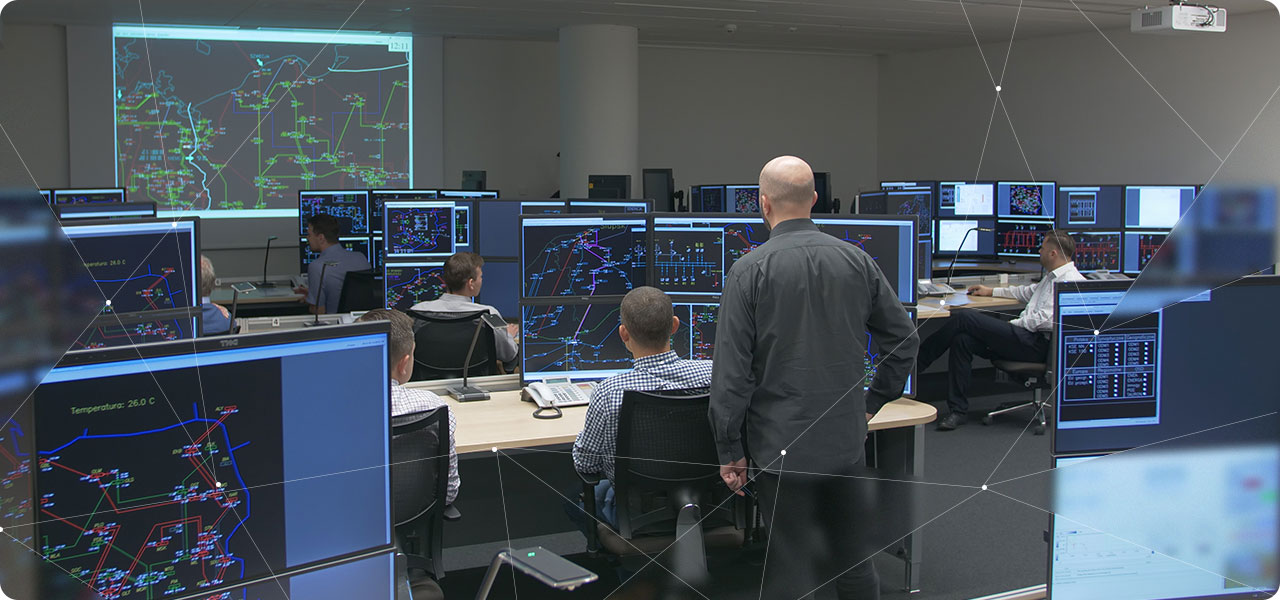
Training course being implemented for 2018.
Fig. 9. Training course being implemented for 2018.
Costs of implementation of advisory services and R&D works*

Fig. 10. The costs of implementation of advisory services and R&D works
* Advisory services and R&D works were mostly carried out by PSE Innowacje Sp. z o.o for PSE. In addition, PSE Inwestycje S.A., Joint Allocation Office S.A. and TSCNET Services GmbH provided services to PSE.

Active participation in the development of the electricity market
GRI 103-2 Implementing the capacity market
The energy only electricity market currently in operation has proved to be an insufficient mechanism to generate necessary long and medium-term investment signals that would lead to the creation of new, stable generating capacities and upgrades of the existing capacities. The consequence of this is the phenomenon of capacity shortfall characteristic of the energy only market.
Adequacy analyses conducted for the coming years suggest a certain probability of periods occurring, during which, due to the unavailability of generating resources, the TSO will not be technically capable of balancing power in the PPS. However, despite the expected power shortfall, investors do not decide to invest in new generating capacity, as they are not sufficiently certain of the profitability of such investments.
Maintaining the current energy only model of the electricity market will result in a further aggravation of the problem of capacity shortages in the system. The reality of this problem was demonstrated by the situation of August 2015, when it became necessary to impose constraints on electricity supply and consumption throughout the country to maintain the PPS operation security. To avoid such situations in the future, it was necessary to take resolute steps. One such step was the decision to introduce a centralised capacity market in Poland.
The primary objective of capacity market implementation is to ensure the security of electricity supply to final consumers in the medium and long term while maintaining cost effectiveness. It will also support the potential development of renewable energy sources without a negative impact on the security of electricity supply to final consumers.
As part of the capacity market mechanism, PSE will conclude capacity agreements under which the so-called capacity providers will be required to provide adequate capacity in risk periods and to remain ready to provide the capacity. Those commitments ¬- called capacity obligation - will be offered in auctions by generators, operators of energy storage facilities and controlled electricity loads (demand reduction), and also by entities representing groups of generators or consumers (so-called aggregators). Capacity auctions will take place at a specific point in time in advance of the period for which capacity providers offer their product.
The capacity market should generate necessary investment incentives supporting the construction of new generating capacity, restoration of withdrawn capacity and upgrades of existing units. It should also make it possible to implement an effective, competition-based mechanism for the coordination of the construction and withdrawals of generating capacity and the development of the interruptible load service, while ensuring the minimisation of costs incurred by final consumers.
The capacity market will operate in parallel with the energy market, without limiting its operation or replacing supply and demand-based price formation in the energy market. The objective of effectively meeting the desired electricity supply security standard will be achieved by making demand in the capacity market dependent on the calculated forecast power demand.
From PSE's point of view, implementation of the capacity market in Poland is an opportunity to eliminate the problem of capacity shortage in the PPS. It will also enable the environmental impact of the power sector to be reduced by upgrading the existing generating units and construction of new ones, in compliance with more stringent emission standards.
The capacity market is a solution that ensures the operational security of the PPS not only in the next few years but also in the long term.
Framework schedule of capacity market processes in 2018
|
|
Action |
Scheduled time |
Status |
|---|---|---|---|
|
1. |
Commencement of general certification |
3 April 2018 |
Completed |
|
2. |
Completion of general certification |
29 May 2018 |
Completed |
|
3. |
Commencement of certification for primary auctions for the years 2021-2023 |
5 September 2018 |
Completed |
|
4. |
Completion of certification for primary auctions for the years 2021-2023 |
31 October 2018 |
Completed |
|
5. |
Primary auction for 2021 |
15 November 2018 |
|
|
6. |
Primary auction for 2022 |
5 December 2018 |
|
|
7. |
Primary auction for 2023 |
21 December 2018 |
|
Table 10. Framework schedule of capacity market processes in 2018
Work carried out in 2017 on the development of the Capacity Market Rules
The Capacity Market Rules were developed by PSE on the basis of Art. 82 and 83 in conjunction with Art. 93 (1) of the Act of 8 December 2017 on the capacity market. The purpose of the Rules is to define detailed terms of cooperation between the operator and other participants of the capacity market on the basis of equal treatment and non-discrimination of capacity providers and in a manner ensuring correct and uniform performance of capacity obligations by all capacity providers in a given period of delivery. The Capacity Market Rules regulate:
1. rights and obligations of the operator and applicants as part of the general certification and its progress,
2. rights and obligations of the operator and capacity providers as part of certification for power auctions and the power auctions, as well as their progress, and in this respect the Rules constitute the conditions of auction as determined by the operator within the meaning of the Civil Code,
3. rights and obligations of the parties to capacity agreements - in this respect, along with the model capacity agreements attached to the Rules for the Capacity Market, the Rules for the Capacity Market constitute a civil law contractual model as established by the operator, within the meaning of the Civil Code,
4. conclusion of capacity agreements as a result of transactions executed between capacity providers as part of secondary trading in the capacity obligation on the secondary market,
5. cooperation of the operator with the clearing manager as regards the performance by the clearing manager of the obligation to pay capacity providers the remuneration for the performance of the capacity obligation,
6. payment of bonuses to capacity providers, as defined by provisions of the Act of 8 December 2017 on the capacity market,
7. cooperation between the operator and distribution system operators to the extent necessary to ensure the proper functioning of the capacity market, in particular in the field of verifying the correct performance of capacity obligations by capacity providers,
8. other matters reserved by Art. 83 of the Act of 8 December 2017 on the capacity market to be governed in the Rules for the Capacity Market.
The Rules for the Capacity Market were approved by the ERO President, in consultation with the Minister of Energy, by decision of the President of ERO of 30 March 2018.

Our contribution to the employment and economic development of Poland
The main task of PSE is to secure ongoing and long-term security of energy supply in Poland, mostly by managing the Polish power system and by maintaining and expanding the transmission network.
By supplying the electricity for the needs of the entire country and by carrying out investments to develop the transmission system, we considerably contribute to the economic growth of Poland, which, in turn, translates to higher incomes and standard of living of the Poles.
As a payer of taxes and other duties, we bring contribution to local, regional and national budgets which finance multiple major investments.
We contribute to all branches of the Polish economy, starting from the energy sector, to trade, construction, professional and business services, to agriculture, hotel industry and catering. We generate this contribution through all elements of the value generating model:
1. Management of operations of the Polish power system;
2. Construction, expansion and maintenance of the network infrastructure;
3. Management of human resources and active cooperation with the environment of the company.
Our operations produce the following effects:
added value generated in the economy,
hired employees and new jobs created,
salaries paid.

The entire PSE annual contribution was estimated with the Wassily Leontief model, also called the input–output model. This method focuses on examination of interdependencies between different branches of the economy and enterprises. The model was based on the latest input-output tables, at current base prices for domestic production in 2010, published by the Central Statistical Office in 2014.
Every economy, whether analysed from the a single-country perspective or global perspective, consists of sectors and branches which are interrelated. Some are more dependent on each other while others are linked less strongly. For example, the food processing sector is linked much more strongly with agriculture than with sport and recreation.
As each enterprise can be assigned to a particular sector and branch, businesses interact with each other, as do branches of the economy. This dependence can be measured using the input-output model. The result is expressed by three measures of impact on growth: added value, employment and household income.

Thousands of kilometres of the power network in three dimensions
To demonstrate from the economic viewpoint how much our operations contribute to the economy and society, we have used three key areas for the growth of the operations: added value, jobs and salaries..
For each of these contribution measures, we may distinguish three dimensions in which we contribute to improvement in the living standards of the Poles and the Polish economy: direct, indirect and induced:
- Direct contribution.. Results from operations of the company, e.g. the number of employees hired in PSE;
- Indirect contribution. . The expenses we bear to ensuring secure, reliable and economic operation of the power system result in added value and creation of new jobs for our direct contractors and suppliers and the companies they cooperate with, i.e. subcontractors;
- Induced contribution. . As a result of our operations, income of our employees and persons hired by our contractor, suppliers and subcontractors increases. This increases demand and consumption in the market, which contributes to the growth in production and services supplied in various branches of the economy.
When the results of calculations are added in each of the three dimensions, we obtain total contribution generated by PSE.
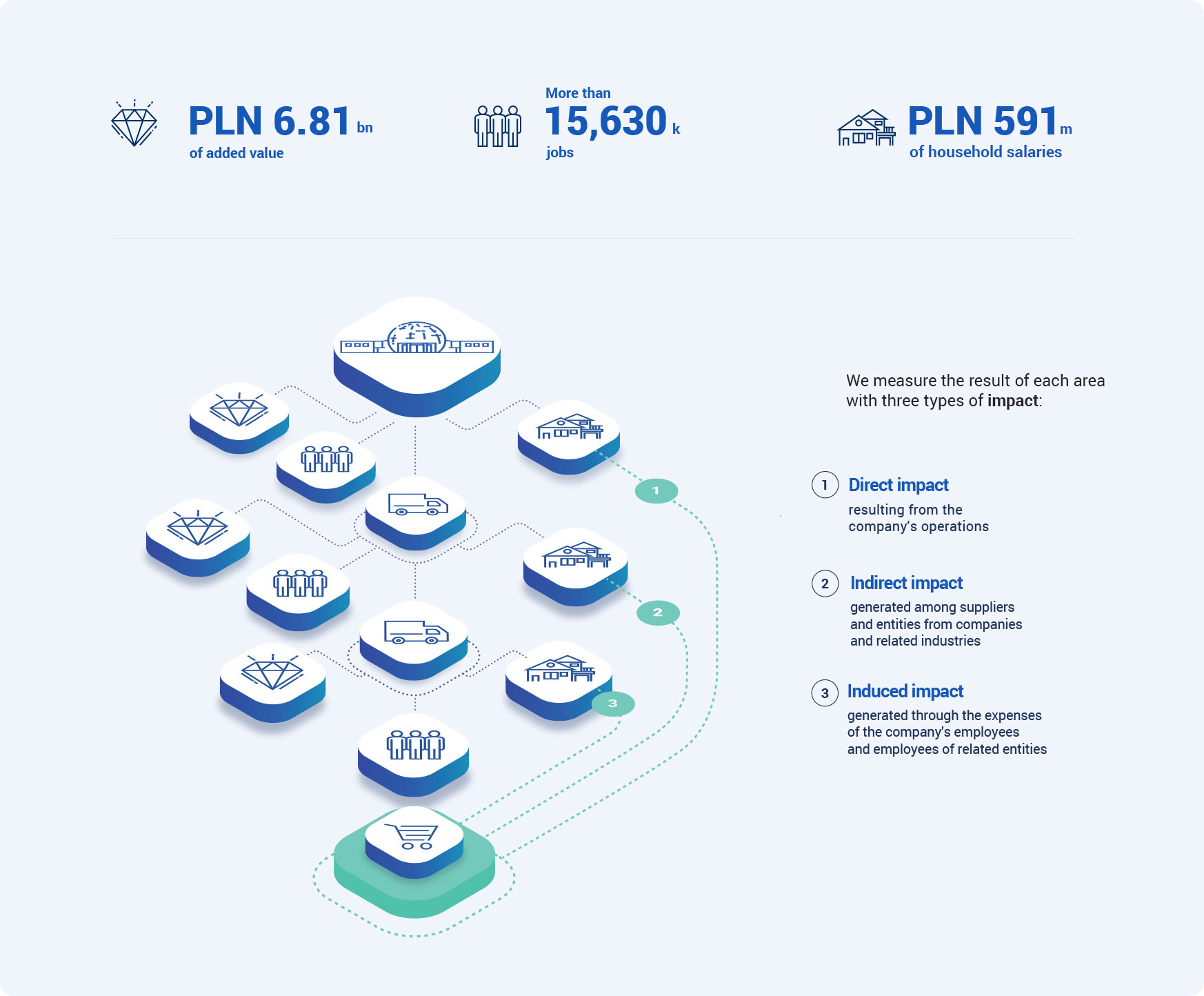
Fig. 11. Visualisation of the input-output model. Source: prepared by Deloitte
Contribution made by PSE to the Polish economy in 2017



Added value
- Direct value added generated by PSE in the branch of electricity generation and transmission was PLN 4.42 bn.
- In the industries where we purchase equipment, materials and services and in the related industries, we contributed to generation of a total of PLN 1.63 bn value added.
- Through cooperation with multiple enterprises and subcontractors of our counterparties (contractors), through remuneration paid to them, we considerably contributed to boosting the demand in the economy, which consequently in 2017 resulted in the induced value added of PLN 0.76 bn.
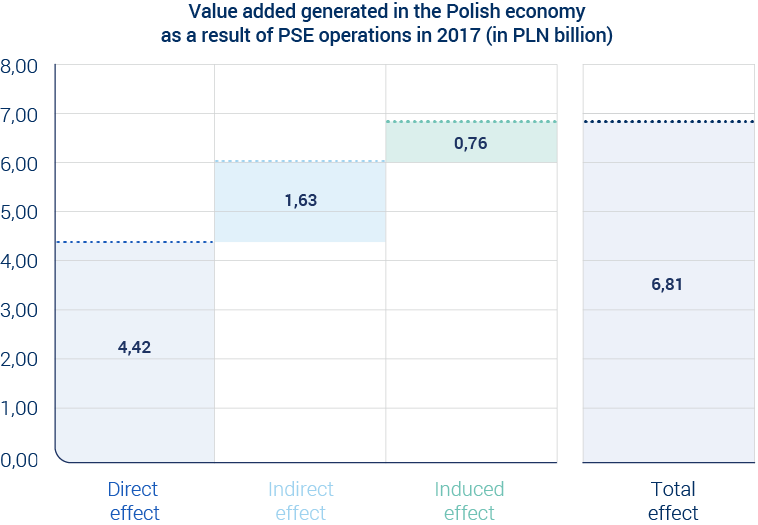
Fig. 12. Value added generated in the Polish economy as a result of PSE operations in 2017. Source: Deloitte estimates
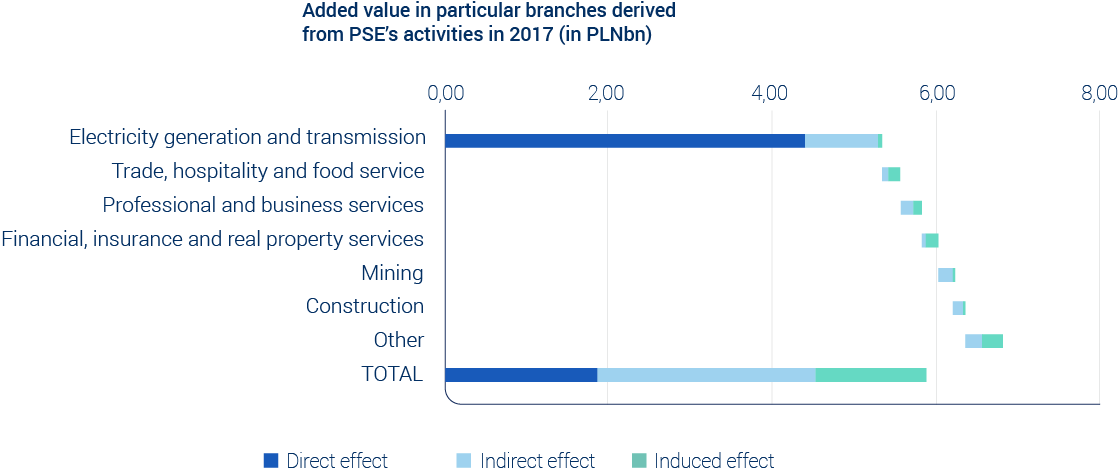
Fig. 13. Value added generated in various branches as a result of PSE operations in 2017. Source: Deloitte estimates.

Added value
PSE added value is measured by the value generated as a result of service activities of enterprises. This economic value is the difference between global production and indirect utilisation.
Added value = global production – indirect consumption
Do Global production includes net sales revenue, margin on goods purchased for resale, change in stocks and the cost of product manufacture for own needs.
Indirect consumption includes the value of products and services used as outlays in the manufacturing process , including: net consumption of materials (including fuels), raw materials (including packaging), energy, technical gases, third party services, financial agency services, travel expenses and other costs.
The sum of gross value added generated by all national institutional units increased by taxes on products and reduced by subsidies on products equals Gross Domestic Product (GDP).
GDP = value added + taxes on products - subsidies on products.
Jobs
Through our purchases from other industries and the interdependencies between them, and through the sales of our services, we significantly contribute to retention and creation of new jobs not only at our head office and PSE ZKOs, but also in various sectors of the economy.
More than 15,630 jobs - total number of jobs retained in the Polish economy in 2017 through PSE operations
- In 2017 the average number of persons employed in PSE was 2,089 employees.
- In the industries in which we purchase materials, equipment and services and in the related sectors, we maintain more than 6,800 jobs.
- By awarding contracts for investment, upgrade and repair tasks and by way of cooperation with multiple suppliers and sub-suppliers we ensured, in the induced way, nearly 6,700 jobs in the industries related to our activities.
7,48 - multiplier effect
One job in our company creates more than 6 additional jobs in the entire economy.
Multiplier effect: The multiplier shows how added value, employment and salaries change throughout the economy as a result of changes of those values at PSE. Calculated from the formula: total effect/direct effect.

Fig. 14. Jobs retained in the Polish economy as a result of PSE operations in 2017. Source: Deloitte estimates
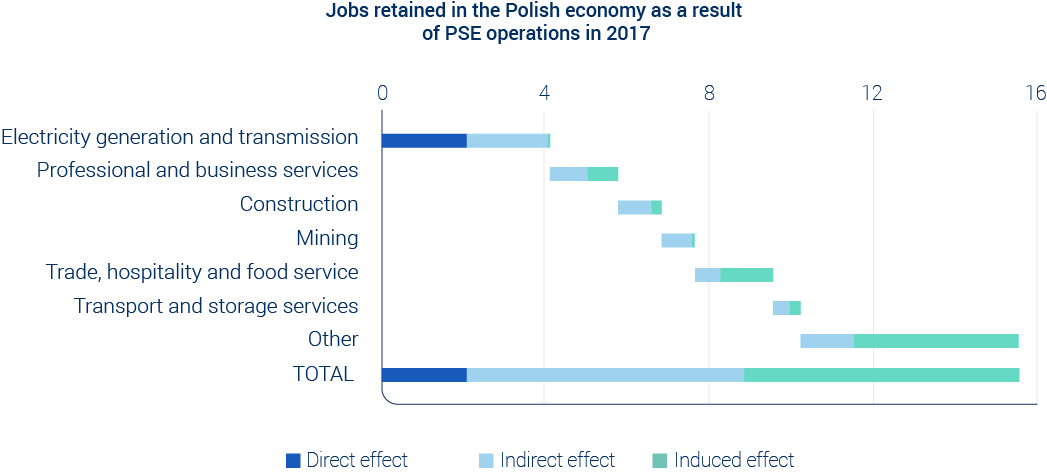
Fig. 15. Jobs retained in the individual industries as a result of PSE operations in 2017. Source: Deloitte estimates
Salaries
Salaries are one of the most important measures of household affluence, and at the same time a guarantee of fulfilment of their subsistence needs. By hiring our staff and having indirect influence over contractors, suppliers and subcontractors who hire thousands of persons and pay their salaries, and through the induced contribution, we positively contribute to the generation of additional salaries in many industries of the Polish economy.
PLN 591m – total value of salaries generated in the Polish economy in 2017 through PSE operations
- Total salaries in our company in 2017 were nearly PLN 190m.
- Through procurement with our suppliers and economic relations among various branches, the contractors, suppliers and subcontractors were able to pay total salaries to their employees at over PLN 265m.
- Salaries paid directly in our companies and indirectly in the industries where we purchase materials and services positively contributed to an increase in household consumption. In turn, this created new jobs and salaries generated in the induced way, with a value of over PLN 136m in 2017.
3,12 multiplier effect
Every zloty spent by us on salaries generates more than 2 additional zlotys of salaries in the entire economy.
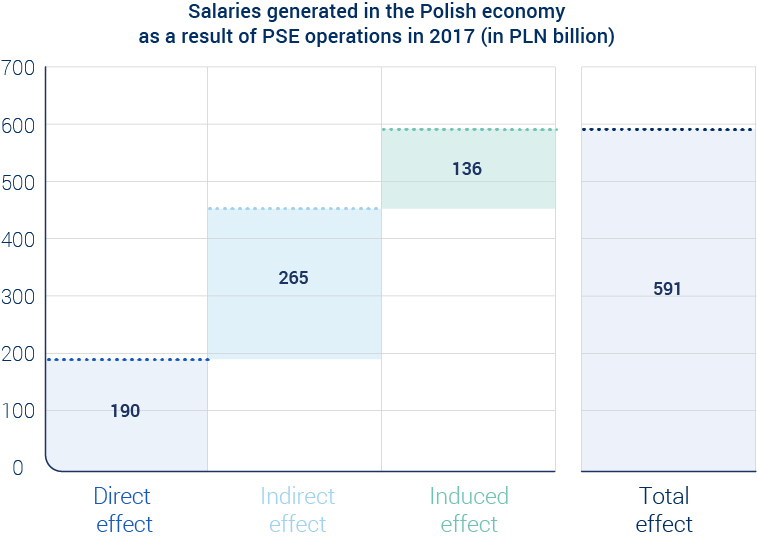
Fig. 16. Salaries generated in the Polish economy as a result of PSE operations in 2017. Source: Deloitte estimates
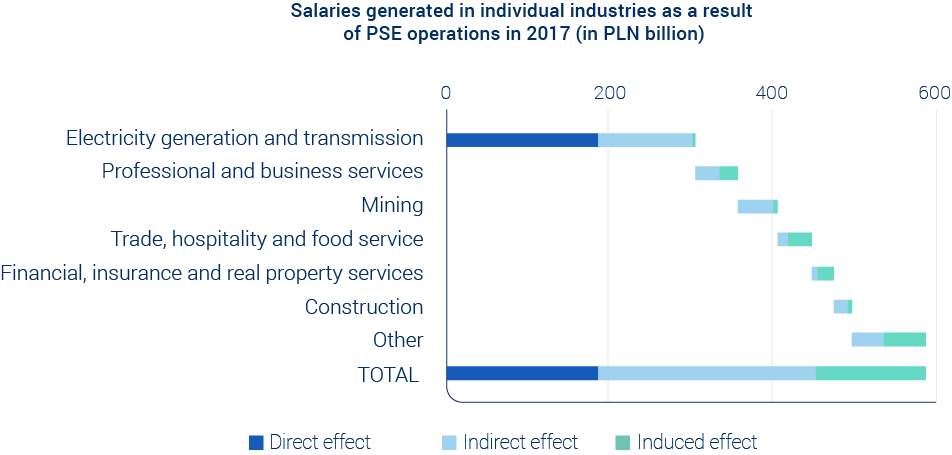
Fig. 17. Salaries generated in various branches as a result of PSE operations in 2017. Source: Deloitte estimates
We support public finance
GRI 203-2 As an electricity transmission system operator in Poland we considerably contribute to taxes and fees paid by the energy sector each year. Numerous investments which we financially support by paying fees and taxes involve construction of roads, environmental protection, improvement of the quality and safety of living and greater educational opportunities.
PLN 1.31 bn – total amount of taxes, fees and contributions paid by PSE to the state budget and local government budgets in 2017

Fig. 18. Distribution of taxes, fees and contributions paid by PSE in 2017. Source: own compilation by Deloitte, based on PSE data
Last year we paid nearly PLN 1 bn of taxes, fees and social insurance contributions to the central budget. This amount corresponds to more than half of EU funds from the Cohesion Fund spent on 144 projects improving the quality of environment and living of residents and 19 investments that implemented modern waste management.
At the voivodeship level, the highest funds were received by the Masovian voivodeship – PLN 22.49m. Among poviats, the greatest tax beneficiaries were the poviats of Piaseczno (PLN 3.65m), Warsaw (PLN 0.68m) and Katowice (PLN 0.40m). The municipality to which we paid the highest taxes, fees and contributions in 2017 was Konstancin-Jeziorna, where our head offices are located – we paid PLN 16,87m..
Tax receipts to the central budget

Fig. 19. Tax receipts to the central budget. Source: Deloitte estimates
5 greatest tax beneficiaries at the voivodeship level
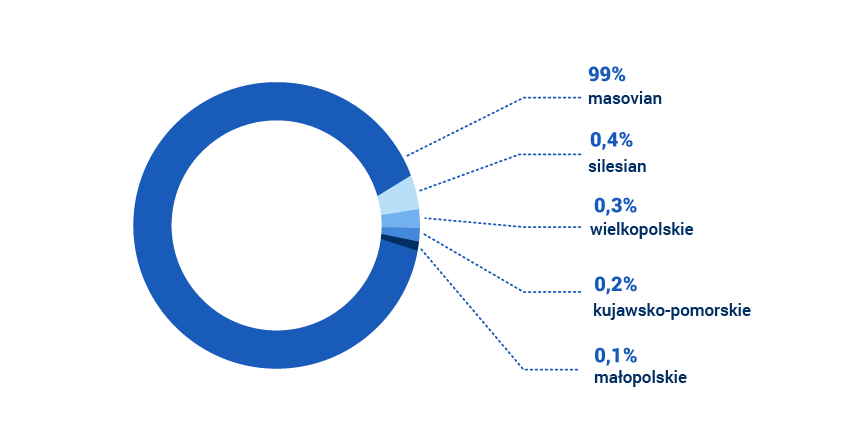
Fig. 20. 5 greatest tax beneficiaries at the voivodeship level. Source: Deloitte estimates
10 greatest tax beneficiaries at the poviat level
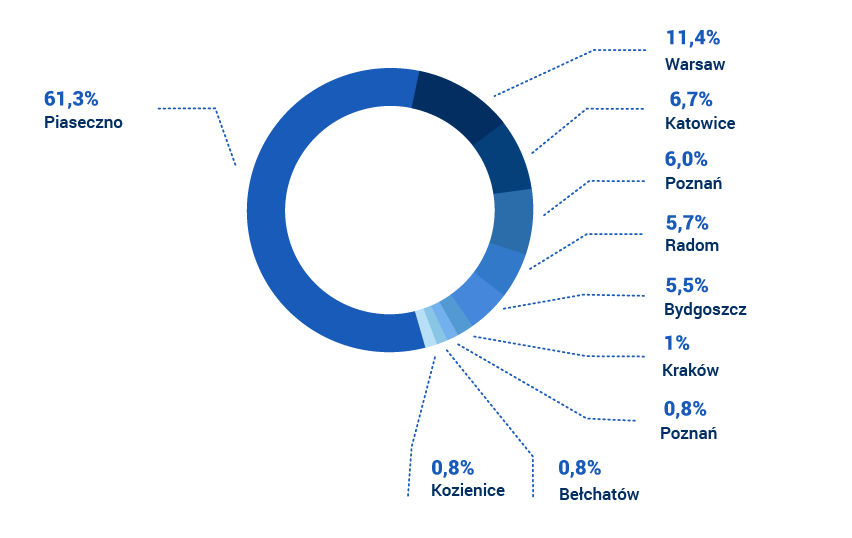
Fig. 21. 10 greatest tax beneficiaries at the poviat level. Source: Deloitte estimates
10 greatest tax beneficiaries at the municipality level
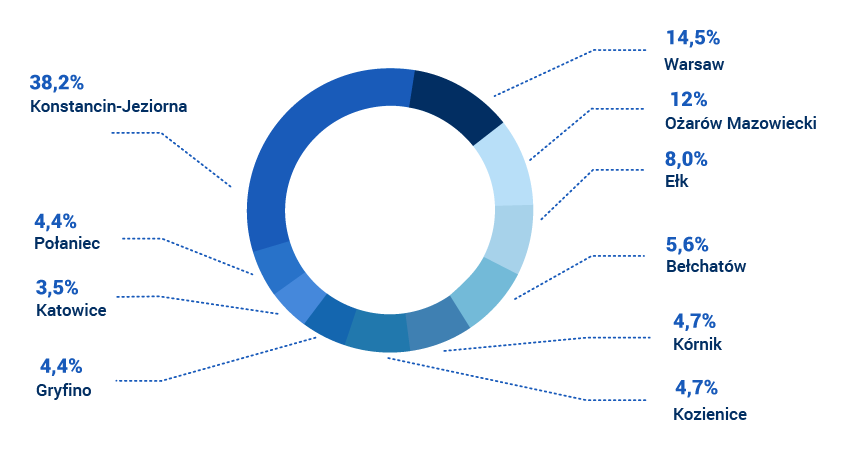
Fig. 22. 10 greatest tax beneficiaries at the municipality level. Source: Deloitte estimates

PSE as a solid business partner
GRI 103-1 GRI 103-2 GRI 103-3 Building business relations and partnerships
Legal regulations
As a contracting authority, PSE conducts contract award procedures for public and non-public supplies, services and works pursuant to the Act of 29 January 2004 – Public Procurement Law (hereinafter: PPL) together with implementing measures and the Contract Award Procedure at PSE S.A. (Procedure).
Conditions for participation in the procedure
The award of a contract from PSE can be sought by contractors who meet the following conditions:
- have formal qualifications for the conduct of a specific business or activity, where required by law,
- possess the necessary knowledge and experience,
- have at their disposal the relevant technical potential and personnel capable of performing the contract,
- have an appropriate economic and financial standing that enables them to perform the contract and are not subject to exclusion from the contract award procedure.
Contract award procedures
A detailed method of procurement is defined by the provisions of the PPL Act and the PSE Contract Award Procedure. In order to maintain the transparency of activities related to the award of contracts, we prepare and conduct public and non-public procurement procedures in compliance with the core principles of:
- fair competition,
- impartiality and objectivity,
- equal treatment of contractors,
- transparency.
We comply with the above principles both in the preparation phase and in the phase of the contract award procedure, preparing the terms of reference and appointing the tender evaluation committee. The obligation of compliance with the above principles rests with the contracting authority also in the course of the procedure. In addition, activities related to the preparation and conduct of the contract award procedure are performed by persons who ensure impartiality and objectivity.
Fair competition principle
Equality principle
Transparency principle
Fair competition principle
The fair competition principle, which provides each interested party with equal access to procurement information and to contracts themselves, is the foremost rule in managing tendering procedure and awarding contracts. The principle applies e.g. to a description of the conditions of participation in the procedure, the method of delivery of statements, applications, notices and information. Some tendering procedures impose a minimum number of potential contractors to ensure compliance with the fair competition principle. The principle of fair competition should also be borne in mind at the stage of preparing the description of the object of the contract; the object of the contract must not be described in a manner that could distort fair competition, i.e. be prepared in an ambiguous and non-exhaustive manner, by means of insufficiently precise and incomprehensible statements, or without taking into account all requirements and circumstances that may affect the tender preparation process.
In practice, the conduct of the procedure in a manner that guarantees fair competition requires:
- admission of multiple contractors to participate in the procedure,
- specification of requirements that guarantee access to a contract only for reliable contractors,
- defining terms of the contract in a manner that enables contractors to prepare a competitive tender.
The fair competition principle applies also to contractors. Submission of a tender that constitutes an act of unfair competition is a basis for the rejection of the tender.
Equality principle
The principle of fair competition is inseparably connected with the equality principle, also referred to as the principle of equal treatment of parties seeking contract award. According to the principle, all contractors should be treated equally, based on identical criteria. The contracting authority may not apply requirements that give preference to a particular contractor. The equality principle means that discrimination of contractors on grounds of their legal status, location and characteristics is prohibited.
Compliance with above principle consists, in particular, in applying the same measure to all contractors, i.e. the same requirements, the same verification of compliance with the requirements, and their consistent enforcement.
When preparing the procedure, the contracting authority sets forth, in the terms of reference, the conditions for participation in the procedure which refer to the object of the contract (object-specific), manner of contract performance (contractual), and to the contractor (subject-specific). It should also specify the manner in which contractors should confirm compliance with requirements. Upon receipt of tenders, in accordance with its rules, the contracting authority verifies contractors' compliance with requirements and takes contract award decisions according to the results of such evaluation.
The conduct of the procedure in a manner that guarantees equal treatment of contractors requires the contracting authority to:
- specify requirements in the same manner for all contractors interested in being awarded a contract,
- define the same method of confirming compliance with the requirements for all,
- resolve – by comparing information and documents submitted by contractors against requirements – whether contractors meet the requirements, and take decisions specified in the terms of the contract according to the evaluation results.
The equality principle applies both at the stage of putting forth conditions for participation in the procedure, and during the evaluation of tenders or selection of the most advantageous tender.
Transparency principle
Transparency means clear and unambiguous rules of contract award. One of the requirements furthering the principle of transparency is the openness of the procedure, defined as access of all interested participants of the procedure to related information on equal terms, as well as impartiality and objectivism in taking actions.
Contracts awarded
GRI 102-9 PSE cooperates with a large group of suppliers, taking care of social responsibility standards. In 2017, our company awarded 427 contracts for investment projects, supply of goods and services to 326 suppliers for the total amount of PLN 1,666,464,181.78 . The main groups of PSE’s suppliers includes: contractors for new build, upgrade and repair projects performing work on grid assets, suppliers of equipment and instruments, and providers of other services.
Main groups of PSE suppliers:
- 87.5 percent – Poland
- 0.2 percent – EU countries
- 12.3 percent – non-EU countries
Key figures
427 completed procedures
in 2017
1 666 (in PLN '000s)
total value of contracts in 2017
368 completed procedures
in 2016
2 217 (in PLN '000s)
total value of contracts in 2016
Impact indicator
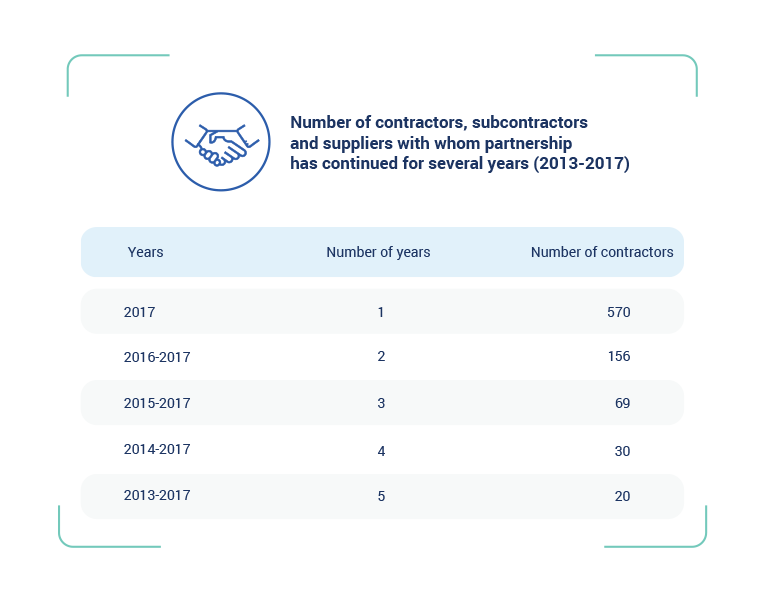
Table 11. Number of contractors, subcontractors and suppliers with whom partnership has continued for several years (2013-2017)
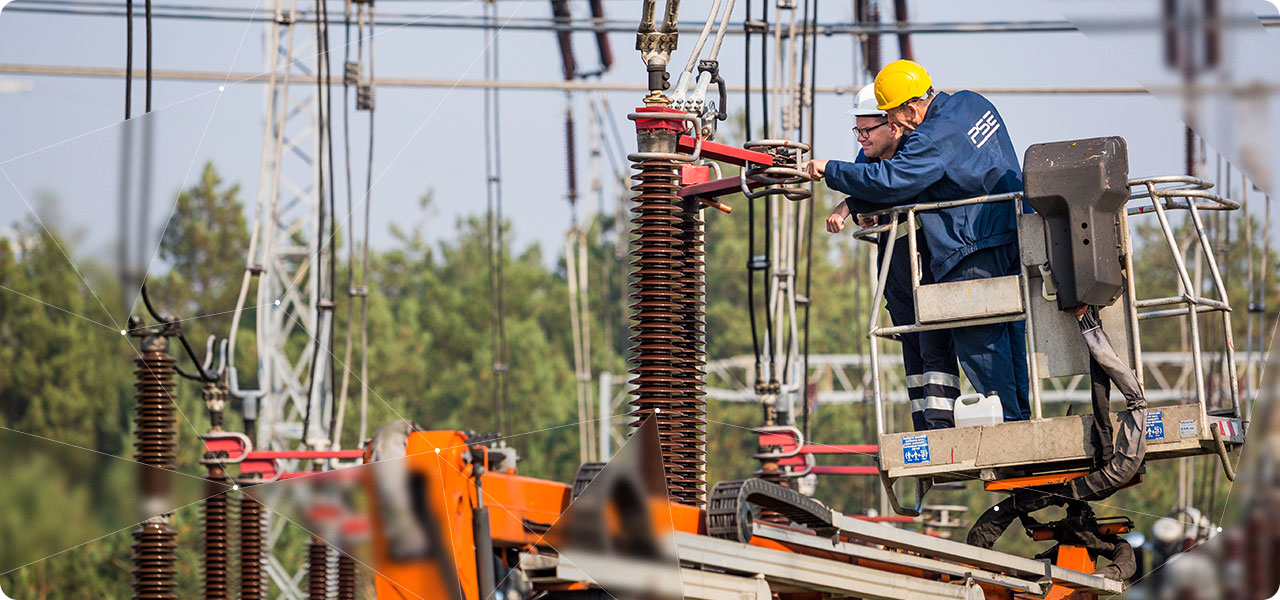
GRI 103-1 GRI 103-2 Requirements and standards of cooperation with contractors and subcontractors
Efficient management of investment projects is the responsibility of a specialised unit established within our organisation, performing tasks within the framework of the project structure called Central Investment Unit (CJI). It is responsible for transmission infrastructure projects – from the development of a feasibility study, through a public and non-public procurement procedure for contract award for a particular investment task, to its completion.
Two categories of contract award procedure have been adopted by CJI:
- investment – involving construction works under a specific investment project,
- investment support – related to the implementation of investment projects.
In order to optimise and unify the purchasing process, forms of tender documentation and letters to contractors have been developed. The standardisation of form and content is aimed to increase the transparency of documents handed over to contractors, allows tender documentation to be prepared faster and more efficiently, and eliminates significant differences between tender documents under different procedures.
The main areas of change to the Terms of Reference concern the subject-specific conditions and tender evaluation criteria based on which CJI selects the contractor. The conditions imposed are aimed to reduce the risk of entrusting the implementation of an investment task to a contractor who is unable to do duly perform the contract. To guarantee security of investment project implementation and cooperation with contractors, CJI also introduced additional arrangements:
- Extension of the period of the contractor’s required experience from 5 to 7 years (in preparing new conditions for participation in the procedure);
- Extension of the condition of the Contractor’s required experience in designing, upgrading or construction works carried out in the ENTSO-E Continental Europe synchronous area by including experience in working with 220 kV and higher voltage levels (previously, 220 or 400 kV voltage levels; the new requirement secured the Contracting Authority against potential Contractors with no experience in working with the voltages applicable in Poland and in the ENTSO-E member countries);
- Introduction of the requirement for the contractor to have personnel with relevant HSEQ (Health, Safety, Environment and Quality) qualifications, that will take care of the quality and standards of safety, health and environmental protection ;
- Extension of the requirements for social and crisis communication in the course of project implementation. Owing to the wide scope of contracts, the requirements are diversified depending in the subject matter of the contract (e.g. a substation upgrade is not as prone to protests as the construction of new transmission lines);
- Updating the conditions for participation in the procedure with regard to the financial and economic potential – the need to achieve specific levels of selected economic ratios and a specific minimum turnover;
- Modification of requirements concerning the experience of the project manager or the contractor’s project manager (the reason for the change was the need to provide personnel whose knowledge and experience will ensure timely and quality implementation of the investment task of a particular type, i.e. substation or line-related);
- Reduction and diversification of the required tender security.
Development of regions and local communities
Cooperation with local governments
GRI 103-1GRI 103-2As an exemplary investor and good neighbour, we attach special importance to building direct relations with local authorities of all levels: province (voivodeship), county (poviat) and commune (gmina). We involve representatives of those authorities in the decision-making process in the course of project implementation.
In relations with local administration, we seek to provide comprehensive and reliable information on projects, with a special focus on the benefits they bring to communes.
Activities pursued to build awareness of the significance of investments and to develop and maintain a positive attitude to them include:
- face-to-face meetings with mayors and commune heads;
- general meetings as part of commune council sessions devoted to investments issues,
- presentation of investment projects and their progress, as well as benefits for communes and their residents,
- engaging mayors, commune heads and councillors, as well as representatives of units, in communication activities at later stages of the project (educational programmes, participation in meetings, conferences, consultations with residents, etc.),
- distribution of information materials assisting discussions with residents (information folders, two-pagers, questionnaires, information/educational videos),
- supporting local social activities and initiatives o local or regional authorities,
- organising local and regional conferences concerning power lines, with a special focus on sensitive aspects affecting the commune concerned,
- organising meetings with experts in the field of power engineering, impact on the health and life of people and animals, physicians, growers, etc., depending on demand and significance of the issue concerned in the particular area,
- winning support for investment projects from local media, associations and residents through meetings and by involving them in the communication process,
- creating special information points in communes, providing all necessary information on projects,
- conducting local information and educational programmes in communes, tailored to communication needs and responding to allegations made in the affected commune.
Conferences are a form of initiatives pursued under social communication programmes for investment tasks and testifying to our commitment to building relations with local governments.
During the conference “Energy challenges for local governments – electromobility, energy efficiency and clean air”, the 3rd edition of the “Energy-friendly local government” competition was resolved. In 2017, Stoczek Łukowski was among the communes that earned the highest recognition from the jury.
The Stoczek Łukowski commune received the award for its engagement in information/consultation activities conducted during the construction of the Kozienice-Siedlce-Ujrzanów power line. It was an example of model cooperation of local authorities with a power company.
„A new power line section of more than 18 km runs across the territory of our commune. To arrive at a compromise, we held many meetings, discussions with residents, and individual conversations. As a result of the compromise reached, the process of planning, designing and obtaining right-of-way occupancy and line construction consents. By moving the line to a new location, dozens of hectares of attractive investment land was freed up” – said Marek Czub, Stoczek Łukowski commune head, during a conference.
702 meetings
in 2017
111 projects
in 2017
526 meetings
in 2016
84 projects
in 2016

Fig. 23. Meetings with authorities and institutions related to project implementation
Key figures:

Impact of investment projects on the development of regions
GRI 203-2 Public purpose infrastructure investments, including the construction of electrical substations and EHV lines, significantly contribute to the improvement of living standards throughout the region. They perform a number of functions which are important from the point of view of the region and local communities.
Benefits of power investment projects:
- increasing the investment attractiveness of the region,
- ensuring better access to electricity due to the lack power consumption constraints,
- significant budgetary revenue from taxes paid to communes – each year, a commune receives tax revenue of 2 percent of the value of the investment implemented in its territory,
- growth of local business – employing local companies as subcontractors, services to contractors,
- creating new jobs.
Our impact on local communities
GRI 103-1 GRI 103-2
Educational activities
Issues related to power engineering and our activities as transmission system operator are highly important from the point of view of the economy and electricity consumers. At the same time, they are complicated and often incomprehensible to final consumers. As a socially responsible company, PSE carries out a number of educational actions for primary and lower secondary school pupils, as well as a series of workshops for journalists dealing with the power sector.
Educational actions
PSE's investment projects are accompanied by educational actions targeted at children and school youth, which translates into local communities. The activities help to build knowledge of power engineering and energy security, and to alleviate investment-related concerns. In 2017, PSE held several educational actions which yielded measurable outcomes.
Energy for Lower Silesia!
From April to June 2017, the contractors of the 400 kV Mikułowa-Czarna and Czarna-Pasikurowice power lines carried out the educational action “Energy for Lower Silesia!”. Its aim was to enhance awareness of energy security of the Lower Silesian province and both projects, and to win social acceptance for the line projects.
The competition consisted of two parts. In the part related to the 400 kV Mikułowa-Czarna project, invitations to participate were sent to the lower secondary schools from the communes of Sulików, Siekierczyn, Lubań, Nowogrodziec, Lwówek Śląski, Pielgrzymka, Złotoryja, Krotoszyce, Męcinka and Legnickie Pole. On the Czarna-Pasikurowice line route, lower secondary schools from the Długołęka, Wisznia Mała, Oborniki Śląskie, Miękinia, Środa Śląska and Malczyce communes were invited to participate in the action. The lower secondary school of the Ruja Commune, which is situated on the route of both lines, could participate in a part of their choosing. The competition entry was a short film not exceeding 3 minutes, concerning energy security of the region and the relevant investment project. Any technique was allowed with the use of a multimedia device for film recording (e.g. a smartphone, photo or video camera). Overall, about 70 lower secondary school pupils from 9 communes participated in the competition. In the part concerning the Mikułowa-Czarna line, awards were given to films sent in by lower secondary schools from Męcinek (1st place), Siekierczyna (2nd place) and Legnickie Pole (3rd place). In the part concerning the Czarna-Pasikurowice line, we presented prizes to lower secondary schools from Wisznia Mała (1st place), Oborniki Śląskie (2nd place) and Miękinia (3rd place). Three winning teams under competitions related to each of the two projects received electronic equipment for their schools. The prizes were officially presented on 23 June.
All our educational actions were welcome both by school principals, commune authorities, teachers, and the pupils themselves. Before launching each initiative, the project contractor's representatives met with representatives of the schools to explain the objectives and rules of the action. The competitions were planned so as to encourage looking for information on energy security-related issues. In addition, the main indicated data source were the project web pages, boosting the awareness of the projects implemented by the contractors. The recipients of all the above-mentioned educational actions were not only pupils but also teachers from schools situated nearby planned project sites, and indirectly also pupils' parents, local authorities and journalists. The educational actions achieved PSE's goal – they strengthened awareness and educated the public on the operation of the energy market.
Energy for Pomerania!
Between October and December 2017, the contractor for the Gdańsk Przyjaźń-Żydowo Kierzkowo two-circuit line conducted educational workshops aimed to increase knowledge about electricity. All grade five pupils have been invited to participate in the workshops in primary schools situated in the project area. The workshops were delivered in two phases: from October 2015 to March 2016 and from October to December 2017. Overall, 442 pupils from 18 schools participated in the scheme.
The power of electricity
By means of a static electricity generator, the participants learned what electricity is, what electrostatic charge is, and what properties they have. They could become familiar with the phenomenon of electrical charging of bodies. They had an opportunity to get special electrostatic hairstyles, give a friend an electrical turtle, and make a real lightning. They also found out what insulators are and what makes them different from conductors. They checked which materials conduct electricity and how a simple electrical motor could be made.
Electrostatic star
The pupils participating in the experience learned about positive and negative electrical charges. By means of a self-made star, they checked which charges attract and which repel each other.
Build an electric motor
During the workshop, the pupils could see how a motor works, what mechanical energy is and how it can be converted into electrical energy. The participants built their own simple electric motors.
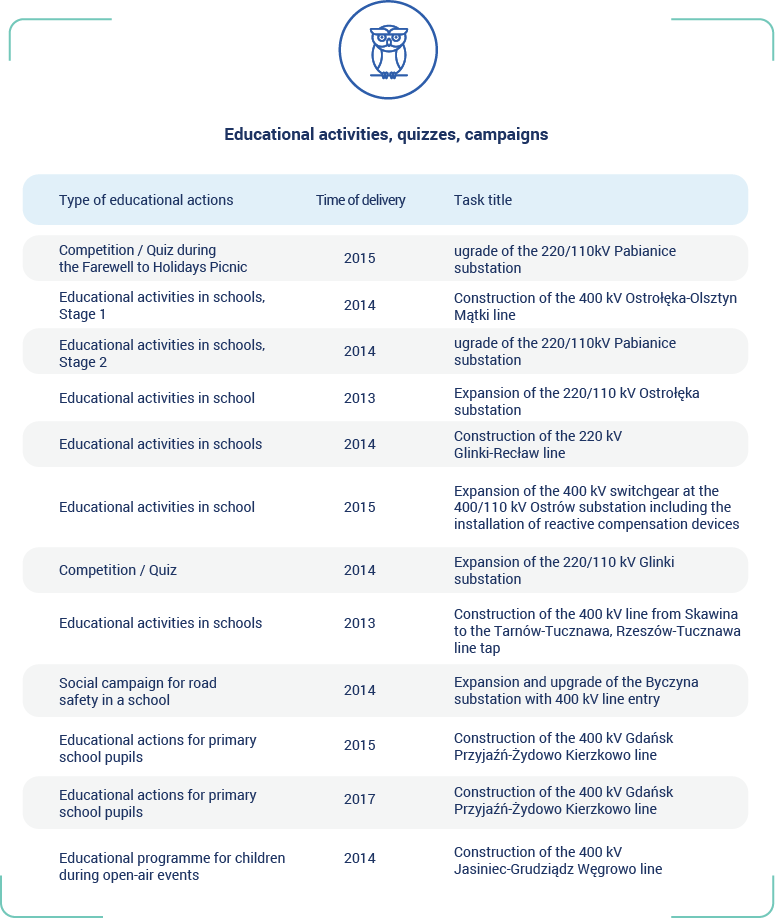
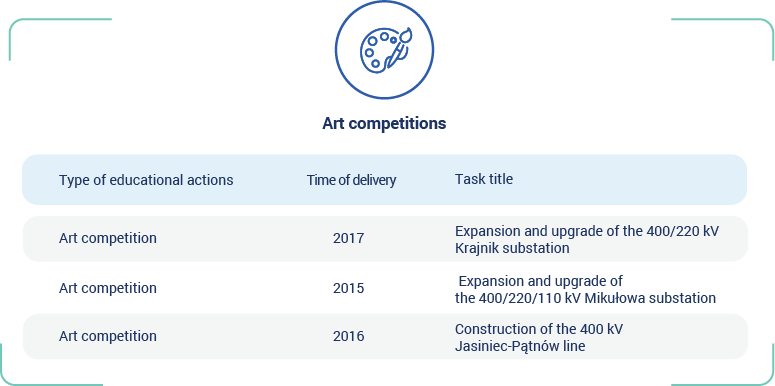
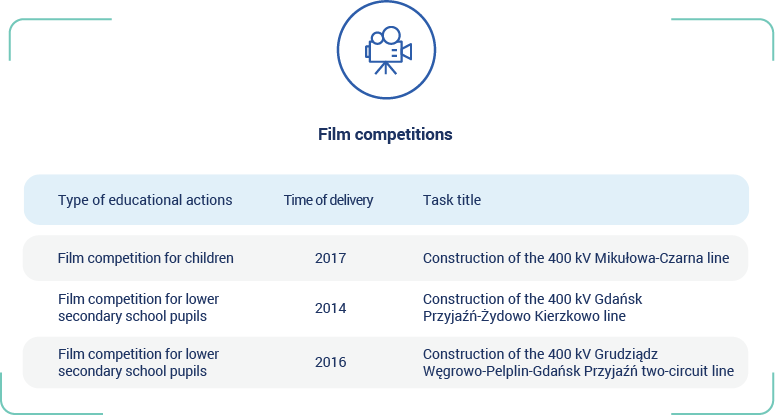

Our impact on local communities
Standards and regulations relating to grid assets
GRI 103-1GRI 103-2GRI 413-2 The impact of our company's operations on the social and natural environment is of particular significance in the case of new overhead line projects. The projects are implemented under the latest European standards PN-EN 50341 on designing overhead power lines. We respect all legal acts applicable in Poland in the fields of environmental protection, spatial planning and management, property management, construction law, etc.
European standards applied in designing and building new lines ensure a high level of operational dependability of lines, a high level of public security, and minimise line impact on the environment. In order to limit tree clearance in forest areas, we follow the practice of running line wires over the forest, owing to which tree clearance can be limited to small areas, to accommodate pylon locations.
For the construction of any line, it is necessary to obtain a decision on environmental conditions, according to which wires or pylons are marked with features visible to birds (representations of predatory birds on lighting arresters or diverter spirals suspended from wires). In compliance with the applicable law, lines are also marked as aviation obstructions.
Devices, instruments and systems installed at substations also meet the requirements of the European standards, which ensures a high level of their operational dependability. Solutions are also used which reduce the environmental impact of an electrical substation, including the natural environment – e.g. each network transformer installed is equipped with an oil tray preventing oil spillage into the environment in the event of failure.
Location of projects
Out infrastructure investment projects require "continuity" to be maintained. Any attempt to move the line route to a different location gives rise to consequences in the adjacent area. Taking into account legal and environmental constraints, several route options are considered. Usually, however, the choice of the line route option, made with the participation of the local community and local authorities, triggers various feelings and reactions of community living in the proximity of a proposed line.
In the siting of projects, we take into account:
- the existing local and regional spatial development plans,
- the development directions of each commune along the line route,
- specific environmental and landscape considerations,
- forest areas,
- areas subject to architectural and archaeological protection,
- other elements that may conflict with the line route.
In the case of a new electrical substation project, acceptance is usually required only from several plot owners, and therefore a compromise solution is easier to arrive at.
Establishment of rights to real property
In order to regulate legal relations concerning transmission facilities between transmission undertakings and property owners on whose land such facilities are situated, the term "transmission rights of way" was introduced in the Civil Code. It defines the extent to which a transmission undertaking can use third-party property on which their transmission equipment is or will be situated, i.e. any structures and facilities forming power lines. The provisions adopted provide the investor with access to facilities, i.e. pylons, wires and substation elements situated on the property in cases of failure, repair and maintenance. Transmission rights of way are limited property rights established on a real property in the form of notarial deed. Its scope is recorded in the land and mortgage register of the encumbered property.
According to the applicable law, remuneration and compensation for property value diminution resulting from the establishment of transmission rights of way is paid to each property owner.
Prior to the commencement of work, we have property appraisal reports prepared for each property to be developed. The reports provide a basis for the determination of the amount of remuneration and compensation for the plot owner. The payment amount is influenced by factors such as the existing value and use of the property and damage to agricultural land, sown or gathered crops, caused by a part of property being occupied by transmission facilities. Additional compensation is payable for pylon placement. After the civil-law agreement is accepted and concluded, and after the notarial deed is signed, owners usually receive the whole remuneration. Compensations are also awarded for damage and losses caused in the course of construction and erection works.
In the absence of the land owner's consent to sign the public utility project rights of way agreement, following the completion of the entire negotiation process, the administrative procedure is triggered in accordance with the requirements of Article 124 of the Property Management Act (PMA). However, the administrative procedure is the last resort in the negotiation process. Before it is applied, steps are taken to reach a compromise solution.
We do not keep statistics of the number of transmission rights of way agreements concluded with property owners by contractors acting on our behalf. This concerns thousands of plots every year. We estimate the percentage of concluded agreement at 94-98 percent. The remaining 2 to 6 percent are administrative decisions issued under Article 124 of the PMA.
Number of people physically or economically displaced and compensation for displacement
We make all efforts to avoid displacement in consequence of project implementation. In 2017, we recorded two cases of necessary displacement due to the expansion of an electrical substation.
An overarching objective of the projects is to satisfy the current and future needs of society, enterprises and individual consumers. To achieve it, joint efforts are necessary of all interested parties.
GRI EU 22 Number of persons physically or economically displaced and compensations, by project type

* Two persona were displaced; father and daughter, who were co-owners of two plots of land necessary for the expansion of the SE GRU substation. The purchase was finalised in Q1 2017.

Construction nuisance
The preparation and commencement of a line or substation construction or upgrade project sometimes gives rise to unreasonable concern among residents about losses resulting from its implementation. This concerns mainly potential damage to public and private roads, crops, meadows, trees, etc.
In line with our best practice, upon completion of work we carry out necessary reclamation and pay, in agreement with the plot owners, compensation for damage caused. In the absence of an agreement, the appropriate compensation is assessed by a property appraiser.
Impact of electromagnetic fields
All electrical equipment generates an electromagnetic field around it, resulting from the presence of voltage and current flow. Extra-high voltage lines belong to this group of equipment. Low-frequency (50 Hz) electromagnetic field is created around the line, of the same type as that generated by a vacuum cleaner or electrical appliances used in every home. The impact of electromagnetic fields is a common subject of discussions on the potential impact on human health.
The results of surveys carried out so far around the world do not confirm concerns about the negative impact of low-frequency electromagnetic fields on human health and other living organisms, nor do they exclude such impact. It is exactly for this reason that Poland and the whole of the European Union have adopted relevant laws and regulations specifying, with a large safety margin, the acceptable values of impact of power facilities. They are stringently observed by our company. Prior to putting a facility into service, electromagnetic field measurements are performed, which are then subjected to verification by environmental protection bodies, which eliminates the risk of non-compliance. Interested readers are referred to the World Health Organisation (WHO publication "Environmental Health Criteria No 238 - Extremely Low Frequency Fields”, Geneva, Switzerland, 2007).
For each investment project performed, we prepare information guides addressed to local communities, which contain reliable information on the investment concerned, including its environmental impact. Additionally, the impact of electromagnetic fields is always one of the subjects of a programme of regional conferences organised by our contractors in cooperation with us.
GRI 103-1 Noise
The emitted noise level depends on the power line design and on weather conditions (it is much higher during drizzle and rain, which is beyond our control). Noise coming from newly designed lines outside the rights of way does not exceed environmental limits.
The main noise sources at our substations are transformers. We use equipment with a reduced sound power level and advanced cooling solutions. In special cases, noise screens are erected to suppress noise.
GRI 103-1 Landscape values
By assumption, we avoid running power lines across areas of special landscape value. However, the problem of a power line view, even a distant one, from a window is one of the main causes of social protests. Form each project, we aim to integrate the line into the landscape so as to minimise any negative aesthetic effect.
Electric shock or lightning stroke
Our extra-high voltage lines are fitted with ground wires. This means that the risk of lightning stroke in their vicinity is reduced. However, elementary caution is always required to be maintained near a line – in particular when performing work with the use of farming equipment.
Failure removal
Owing to a lack of legal norms governing transmission rights of way for power lines built in previous years, sometimes problems arise on privately-owned land, as repair teams' access to properties concerned is hindered or prevented. Hindering access to a site extends the time to remedy a failure or perform a repair, which causes problems, especially for the local electricity consumers.
GRI 413-1 We analyse the impact of our investment projects on the local community (100 percent)
GRI 102-40 GRI 102-42 GRI 102-43
Our stakeholders and forms of their involvement
|
Target group |
Characteristics |
Communication tools and techniques* |
|---|---|---|
|
Direct measures |
||
|
Regulator |
The President of ERO is responsible for regulation of the power sector and for competition promotion. We agree with the President of ERO the Development Plan for meeting the current and future electricity demand and its updates. |
Direct meetings, industry conferences, PSE Impact Report |
|
Contractors for investment projects |
Third-party companies selected through public and non-public tendering procedures. They act for an on behalf of PSE, influence opinions of local communities and local authorities, and form the image of our company as an investor.
|
Direct meetings, industry conferences, internal training, efficient communication on investment tasks under Social Communication Programmes (folders, website, press briefings, conferences, films, educational programmes, etc.) defining communication good practices and guidelines, and cooperation under the principles of sustainable development. |
|
Public administration, local authorities |
Transparent and professional information and educational activities within the framework of social communication contribute to building proper relations.
|
Direct meetings, letters of intent, dedicated specialised conferences, general corporate, specialised and investment-related folders, an expert magazine, PSE impact report presenting in an integrated manner financial and non-financial data, website. |
|
Public opinion, local communities |
A key group from the point of view of infrastructural investments. Convincing immediate neighbours to accept an investment project and establishing transmission rights of way are essential to the lead time of the project. This makes it possible to win greater public acceptance or to work out a compromise. |
Media relations, press articles, websites, folders, leaflets, educational programmes for inhabitants of the communes in which an investment is planned, meetings arranged by contractors and directly. |
|
Protest committees, local leaders of protests and social actions |
Local initiatives resulting from a lack of public acceptance of a solution being considered, and representing interests of the whole community or a selected group. |
Official correspondence, participation in meetings, protest actions. |
|
Employees, management staff of PSE CG |
Committed and motivated employees |
Code of ethics and value-guided conduct, intranet, PSE impact report presenting in an integrated manner financial and non-financial data, information leaflets, communication of strategic projects, communication of changes being put into effect, direct meetings, integration meetings, corporate events. |
|
Employees of |
Committed and motivated employees, management staff, and principles of business ethics largely determine the company's operating efficiency. Employees' level of being informed and their work satisfaction are of key significance to employee commitment building. |
In addition to tools addressed to all employees, additional tools supporting |
|
Local and regional associations |
Local and regional NGOs working towards development of a given area, e.g. commune, village or county. |
Provision of comprehensive |
|
Environmental NGOs |
Local, regional and national non-governmental organisations for the protection of the natural environment or wildlife, or involved in green initiatives in particular areas. |
Direct meetings with representatives of associations, provision of information materials, with special focus on environmental issues and the investor's related activities. |
|
Business partners |
Companies cooperating with PSE at the pre-investment stage and performing services ordered by the company. |
Information on security policy, |
|
Indirect activities |
||
|
Media (national, regional, industry) |
Provide information, form opinions on investments. |
Press conferences, briefings, workshops for journalists, individual meetings (articles, interviews), sponsored articles, trade supplements to newspapers, expert magazine, press kits, presentations, website, PSE impact report presenting in an integrated manner financial and non-financial data. |
|
Central administration, Parliament |
Ministries and central authorities, parliamentarians – especially those on parliamentary committees and teams. |
Individual meetings, presentations, folders, industry and economic conferences, website, PSE impact report presenting in an integrated manner financial and non-financial data, expert magazine. |
|
Contractors (generators, distributors, traders) |
A group of entities cooperating with PSE on a permanent basis, bound by agreements. |
Individual meetings, industry conferences, workshops, expert magazine, PSE impact report presenting in an integrated manner financial and non-financial data, website. |
* In our activities, we attach special importance to building lasting relations and using various methods of dialogue with our stakeholders.
We communicate with our partners through multiple channels. The frequency of contacts depends on PSE's needs and our stakeholders' queries.
Table 12. Our stakeholders and forms of their involvement
GRI 102-43 GRI 103-1 Key figures
58 events and conferences
at both international and national level, with the participation of PSE experts.
114 PSE experts engaged
in events and conferences at both international and national level.
6 publications
on various areas of PSE’s activity appeared in 2017, of which more than 97.5 percent were of a positive or neutral nature.
2 meetings
held, attended by all contractors for investment tasks at PSE headquarters.
